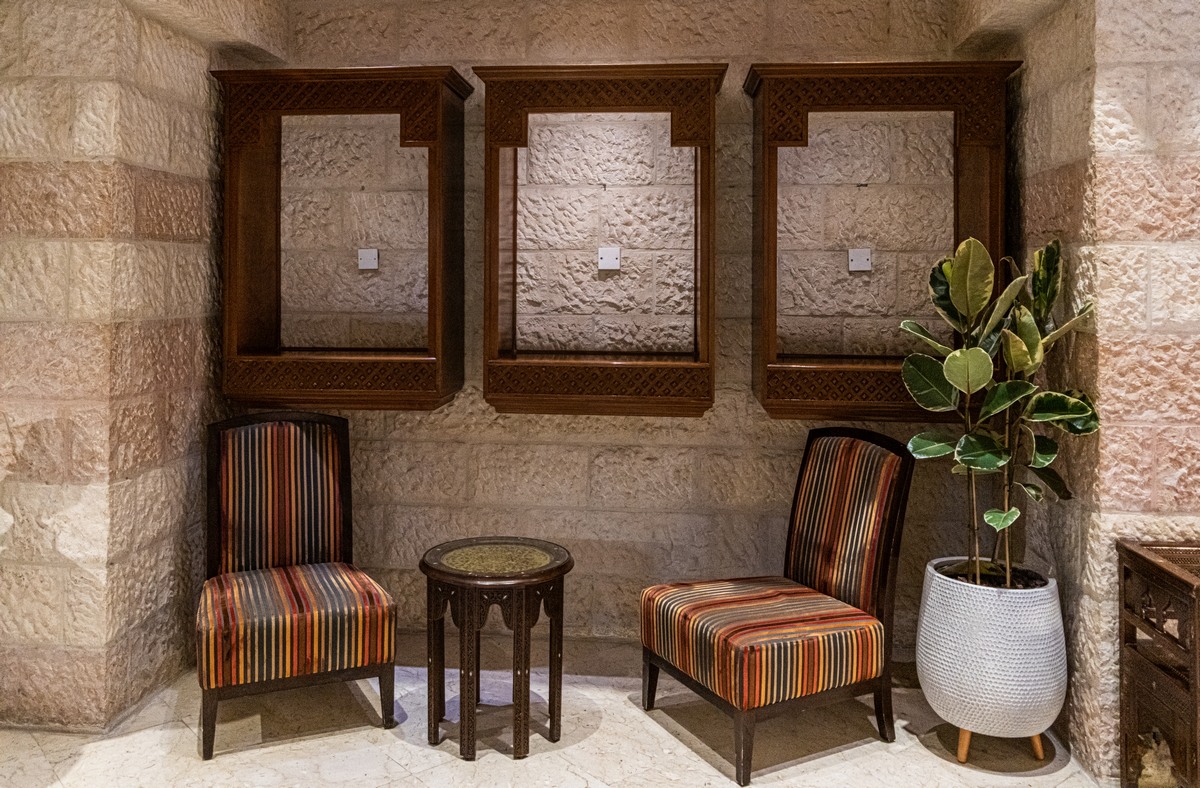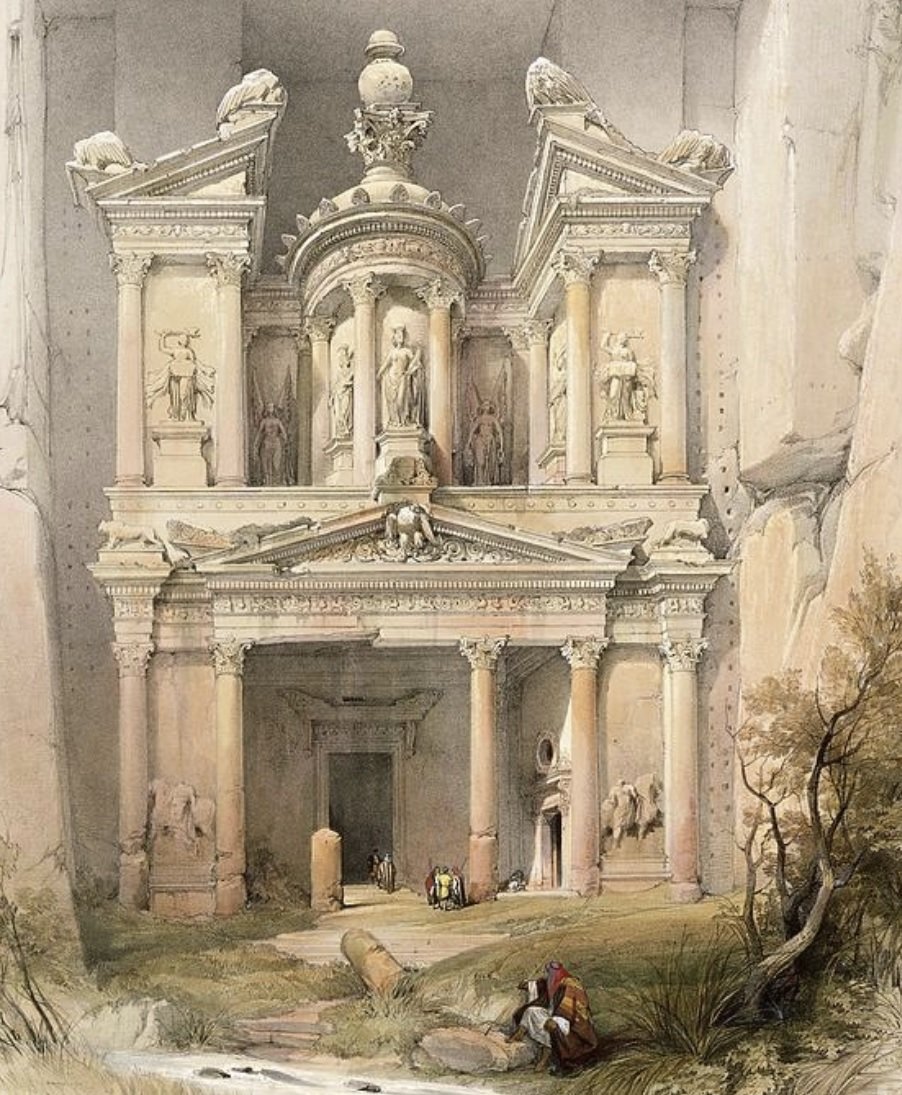December 16, 2022
Petra, Finally.
Having dreamed of getting myself to Petra, Jordan, the ancient city and temple cut into a miuntain, since I was a child, finally, my dream came true!…
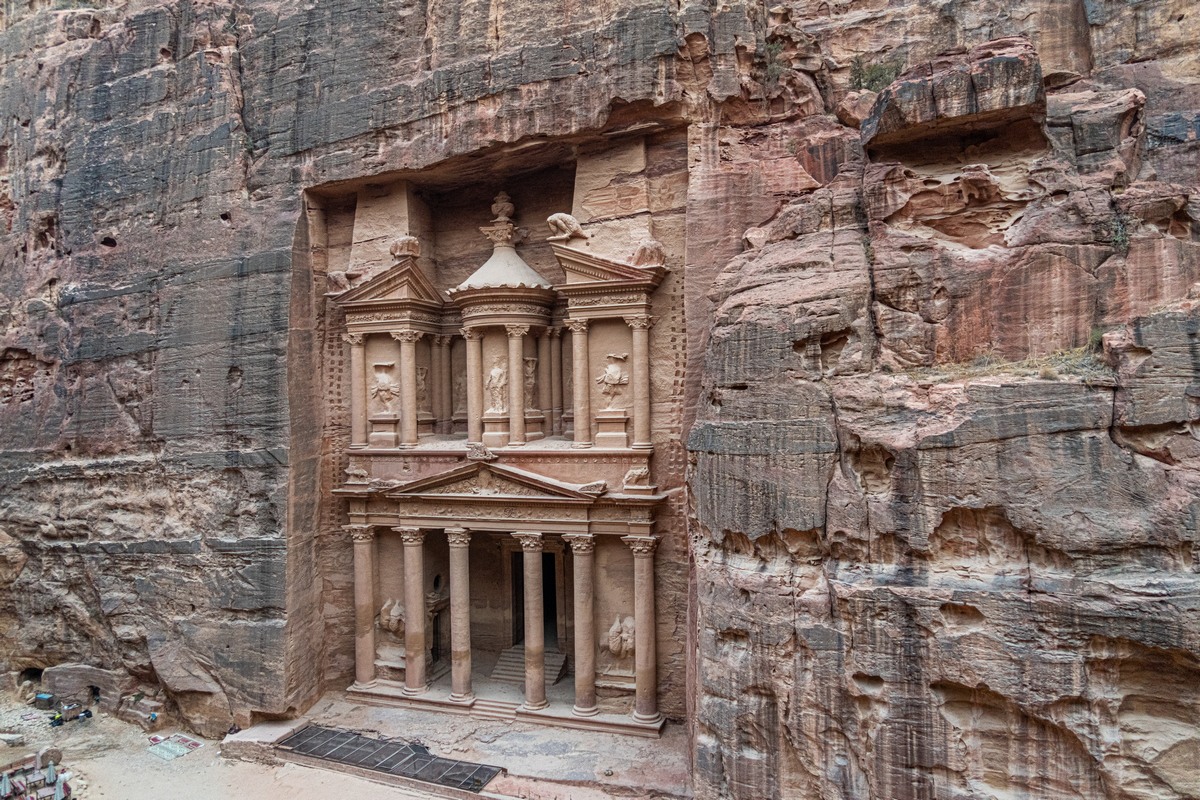
And a… supranatural sight to behold it is – or would be, if it weren’t for the camels and fridge-magnet sellers getting in the way!…

If you can switch off from today’s touristy bustle, you can try to imagine how here, millennia ago, townsfolk would scurry about in among the traders along the single street of the settlement – a ravine about which I’ll tell you more in a bit…
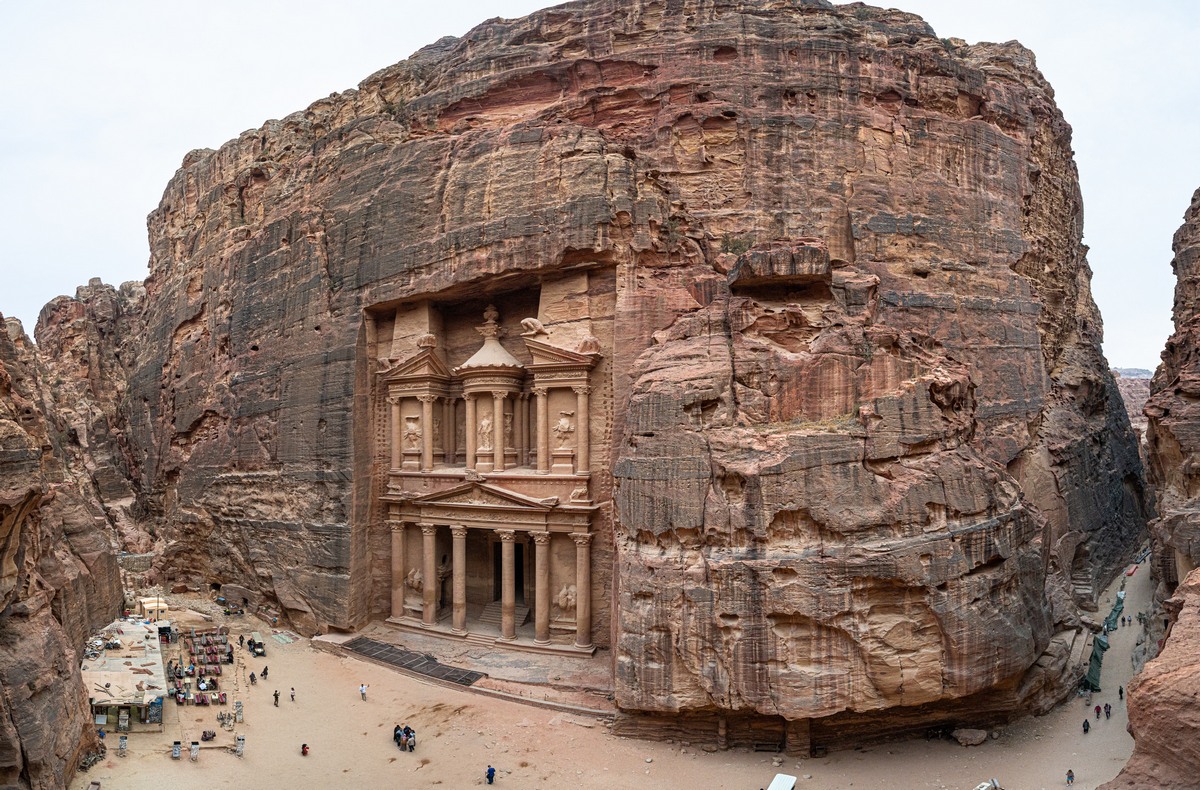
An ancient Piccadilly Circus, almost )
Before coming here, I knew very little about Petra: for some reason I presumed that an hour or two would suffice to check out the famous temple and, say, a few of the caves nearby. How wrong I was! For it turns out that Petra is much, much bigger than I thought: a full four kilometers from end to end! And of course all four of those kilometers need strolling along with plenty of pitstops to snap lots of pics. But that’s just the end-to-end “main road” route; if you also intend to trek along the mountain paths around and about the ancient settlement, two or three days would be a more appropriate time frame. See for yourself:
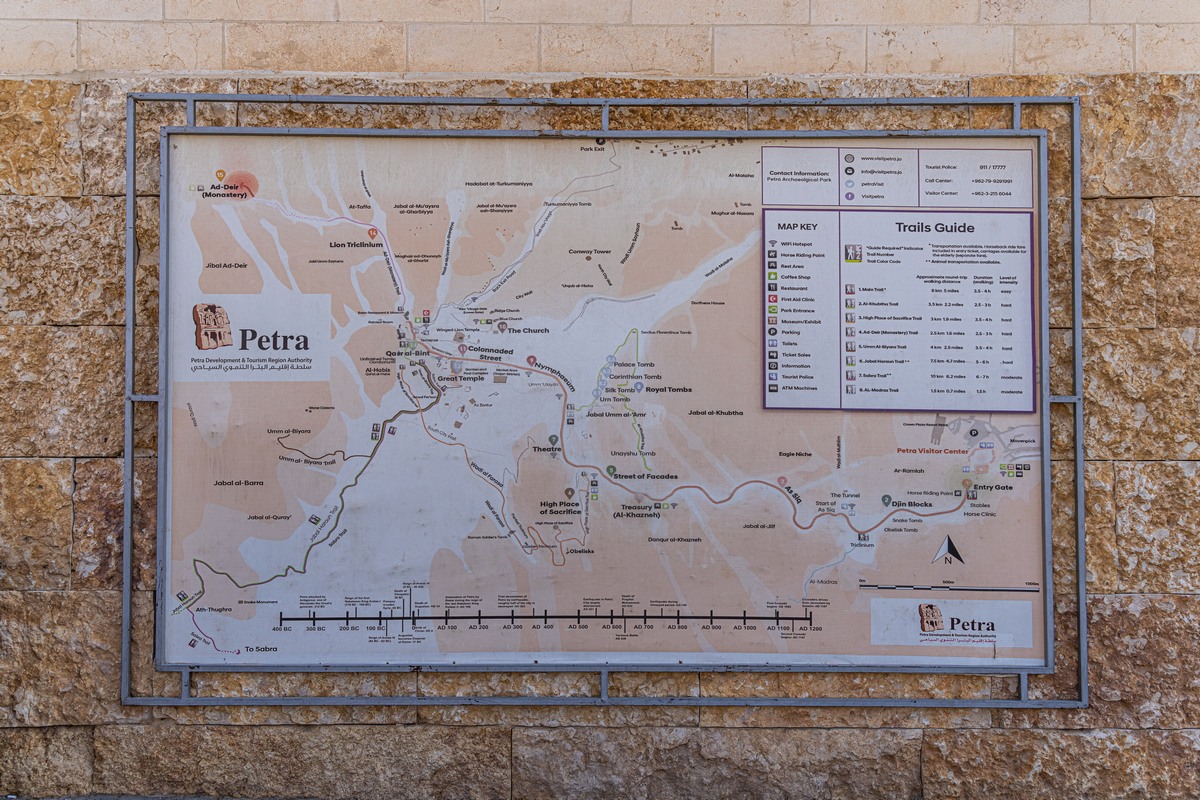
Upon arrival we’re informed someone loves Petra. I wonder who the “I” is?…
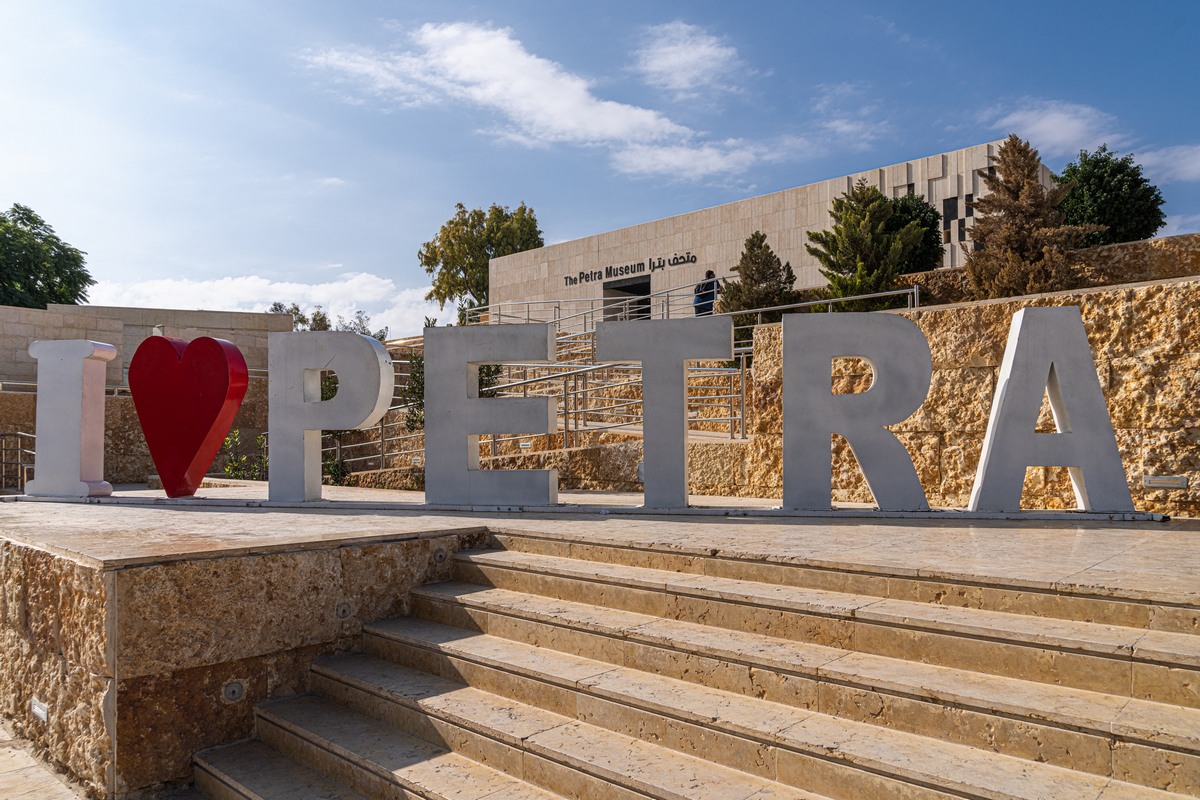
The visitor center. The dogs appeared to be specially placed for decorative purposes:
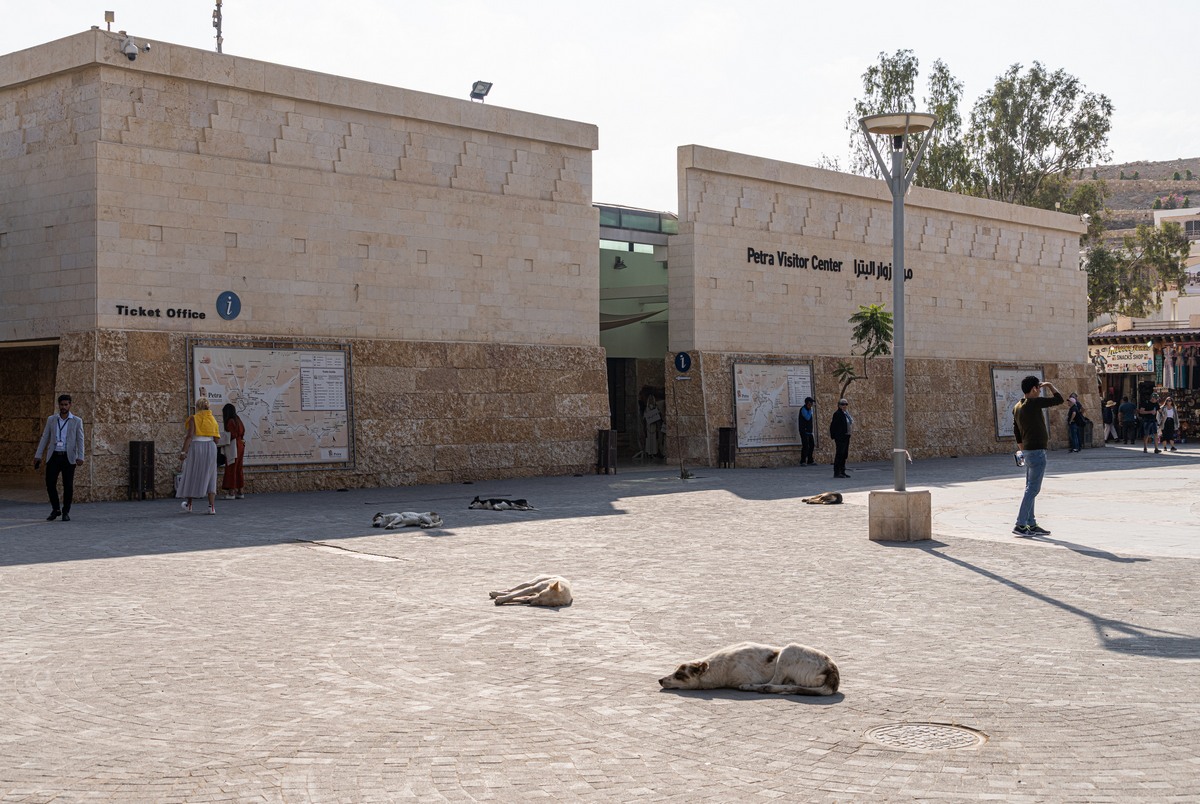
We bought our tickets (plus several bottles of water (mandatory!)), went through gate, and then walked around a kilometer-and-a-half along this here track. Lazy tourists can ride it on a horse or donkey, or even take an electric buggy. But… lazy… us?!…
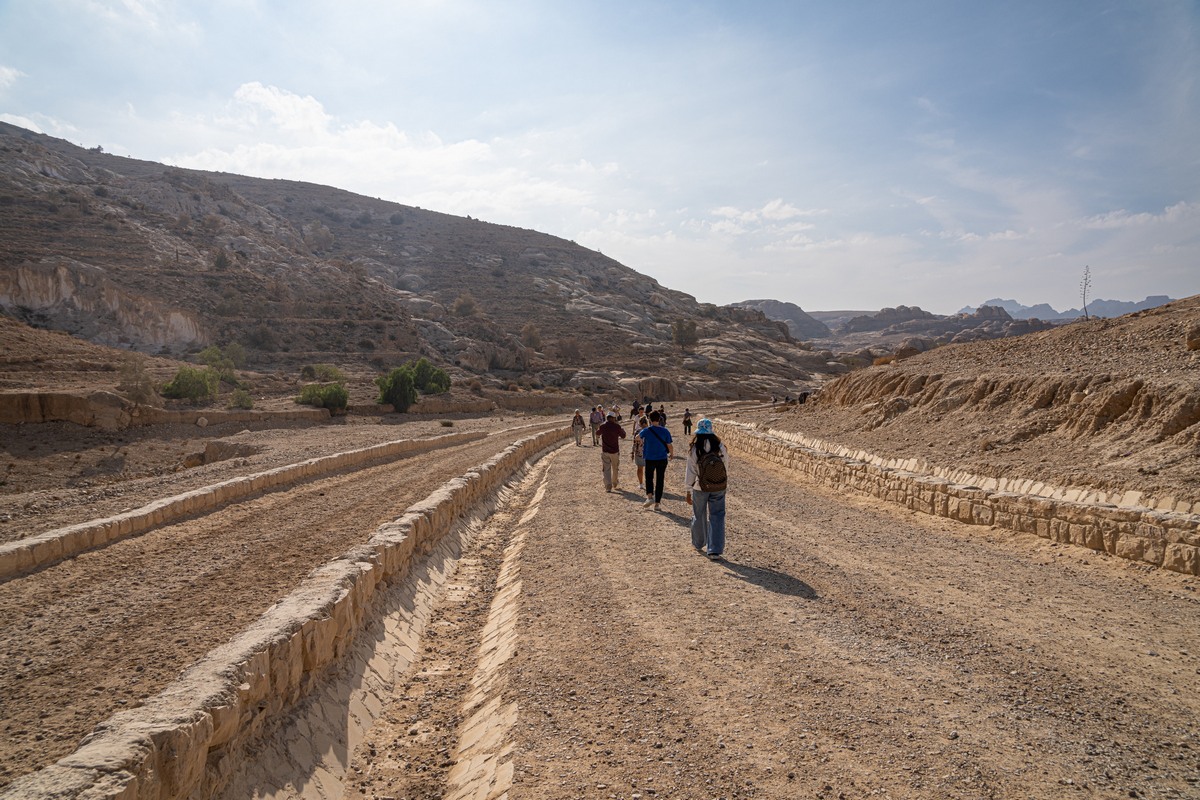
(Btw: the track to the left of the trench is the one for the horses and donkeys)
Up ahead practically straight away we observe large rock formations of interestingly unusual shapes…
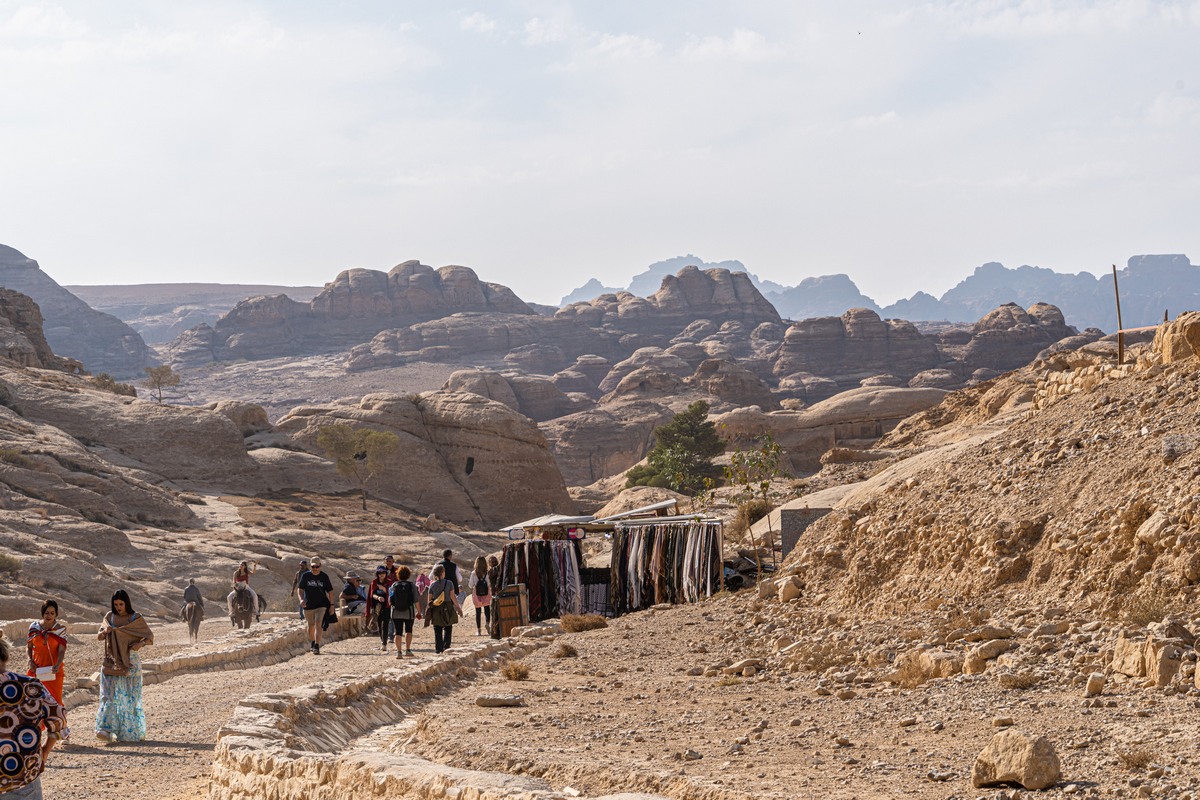
We were here in late November, toward the end of the day, but all the same it was really hot. That’s why the water is mandatory; also useful: hats and even umbrellas:
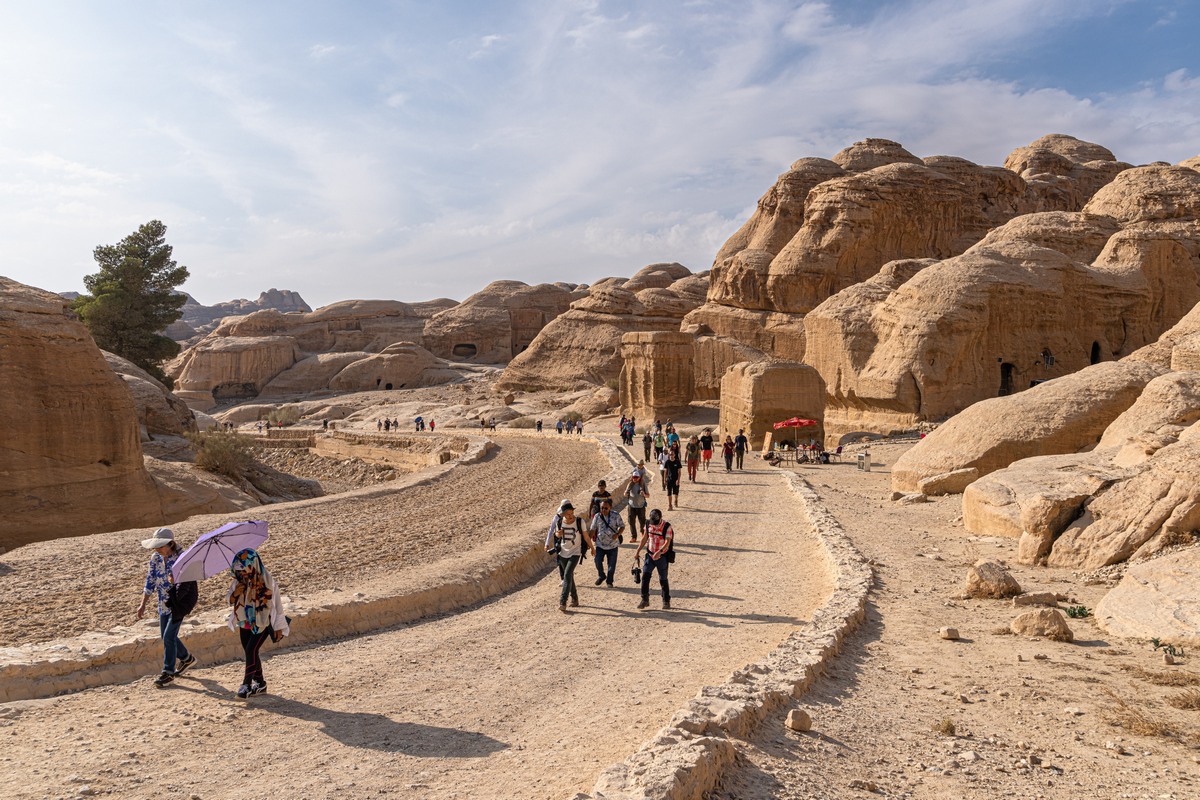
On the way there it’s all downhill. Of course that means on the way back, when you’re no doubt tired, it’s all uphill. Still, there are the transportation options I mentioned, but we preferred the healthy one…
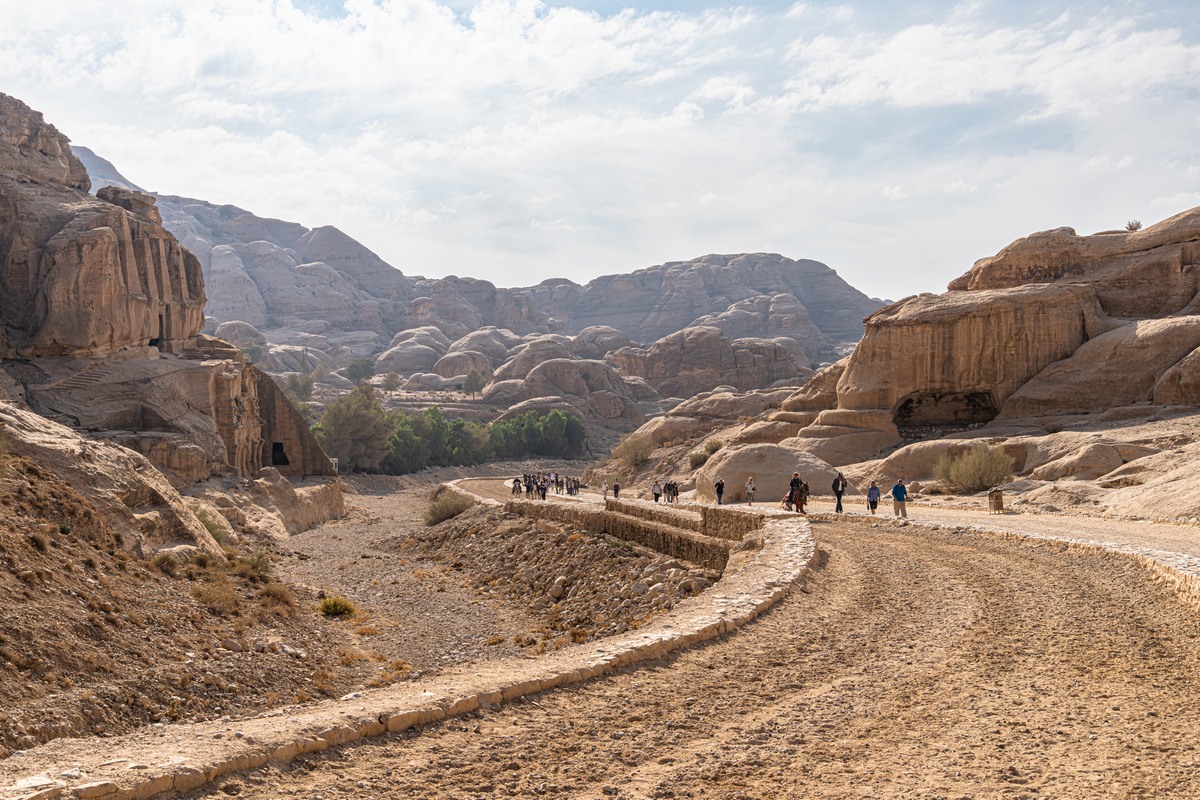
We see the first of the worked rock:
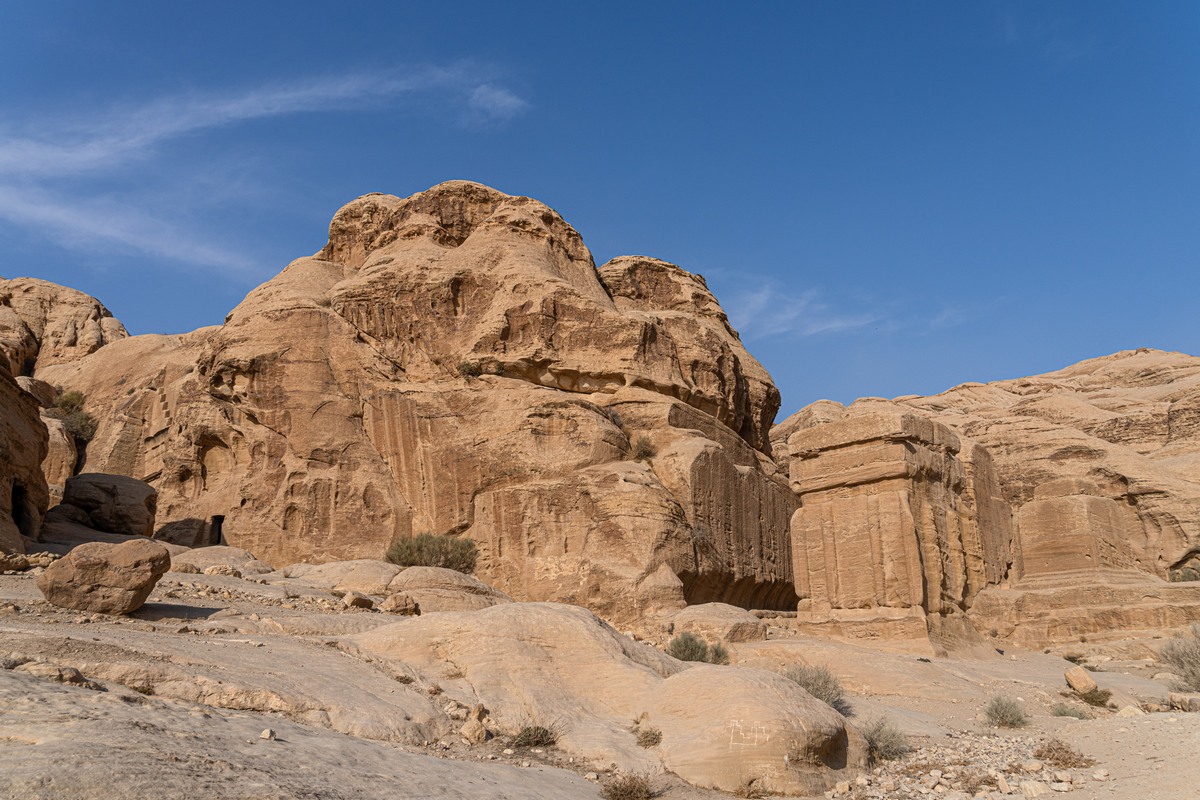
The caves are either living quarters or temples. Quite how old they are I didn’t catch (too busy getting good shots:) ->
A two-bedroomed apartment! ->
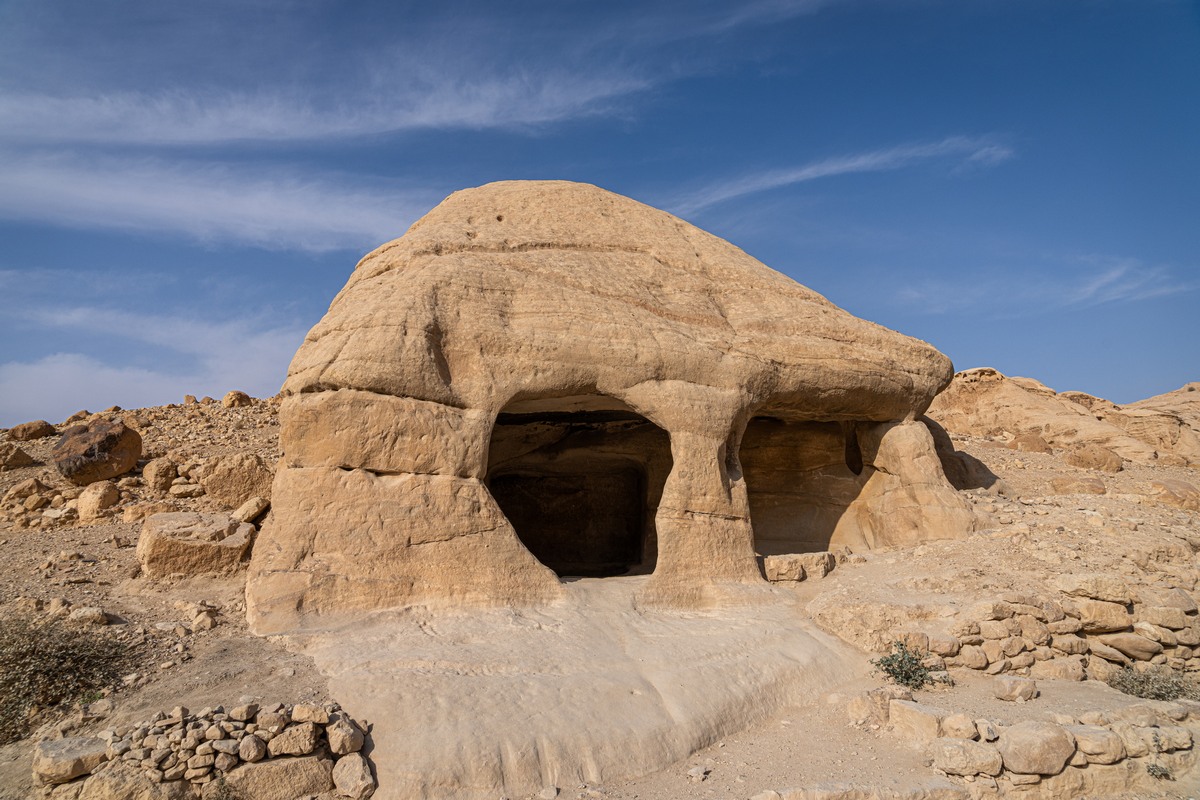
And here’s the start of the ravine ->
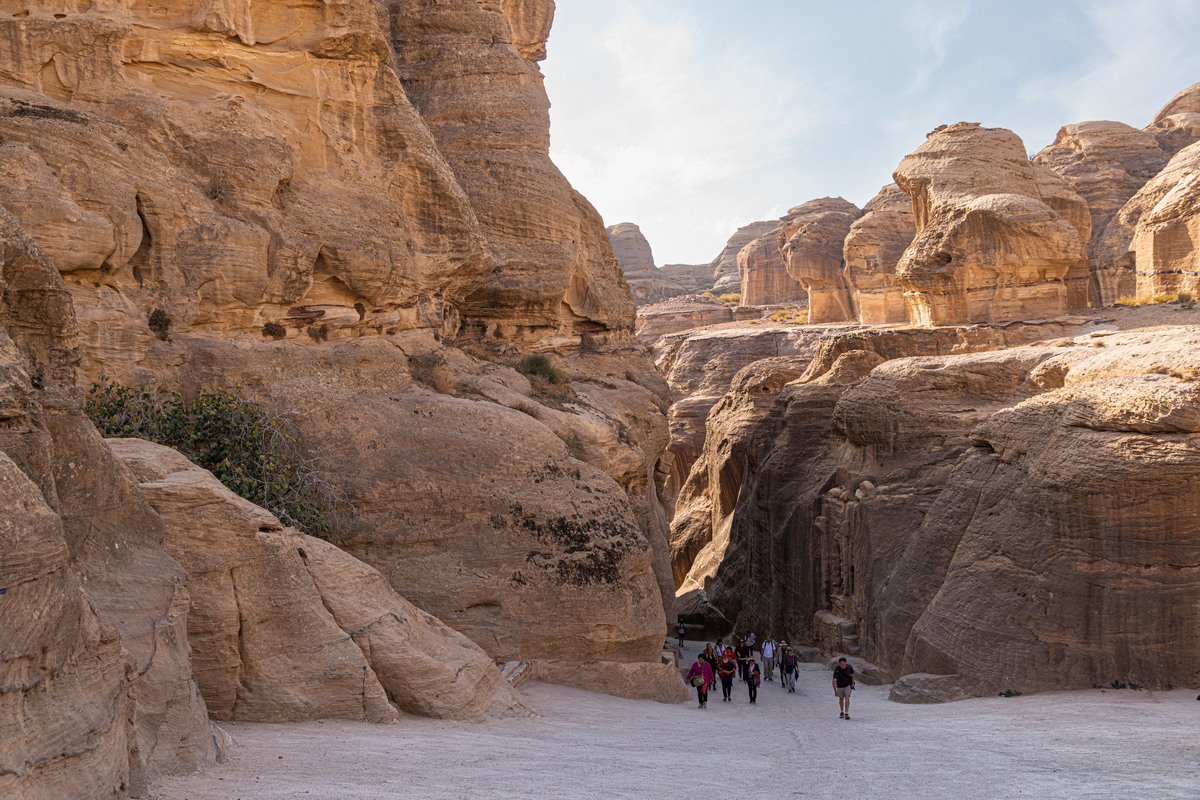
The ravine is called Siq – and it’s terrifique! A walk along it overloads the senses, stirs emotions, and… droops the jaw ).
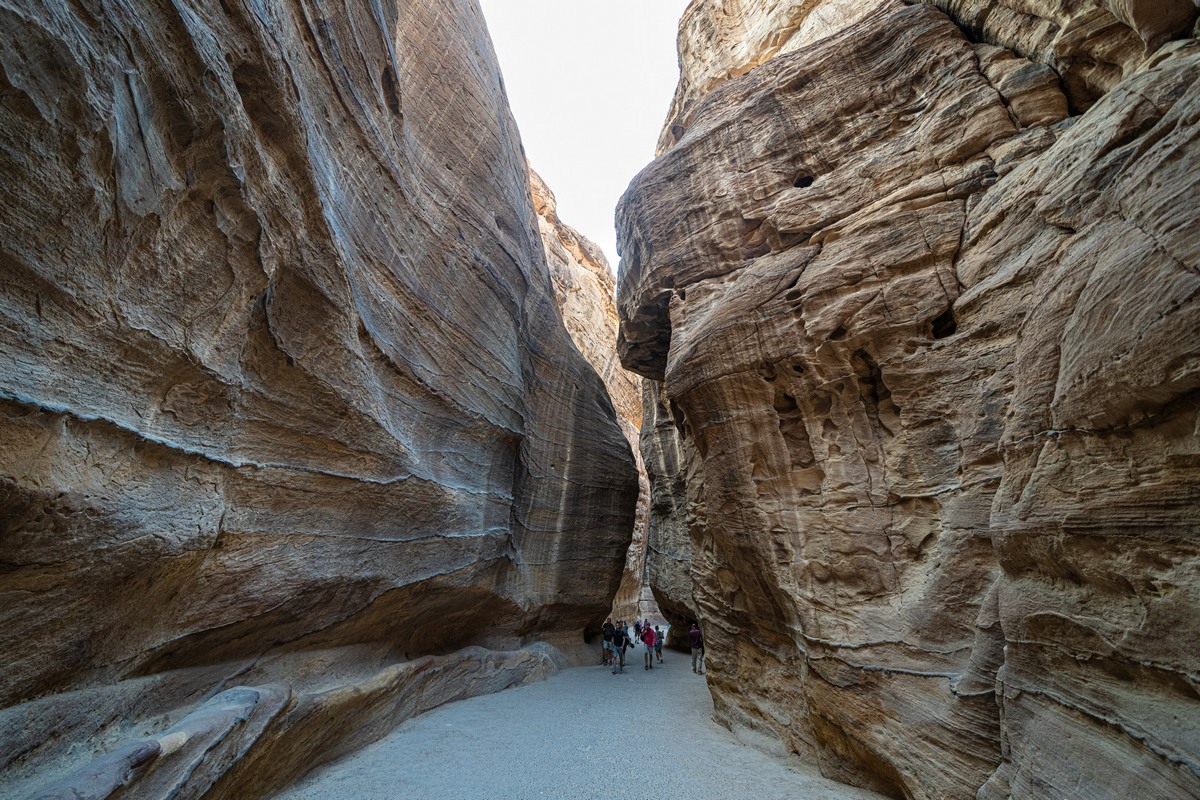
Up top things are just as mind-blowingly impressive – and expressive:
At first it’s nice and wide, so it doesn’t get too crowded. Nice. A little further it gets narrower and narrower ->
Siq lasts just over a kilometer, but there are so many gorgeous paysages that need snapping that it takes you much longer than “18 min” ->
The views are unusual and unusually awesome. Sometimes you need to sit down to take it all in:
The designers need an award! ->
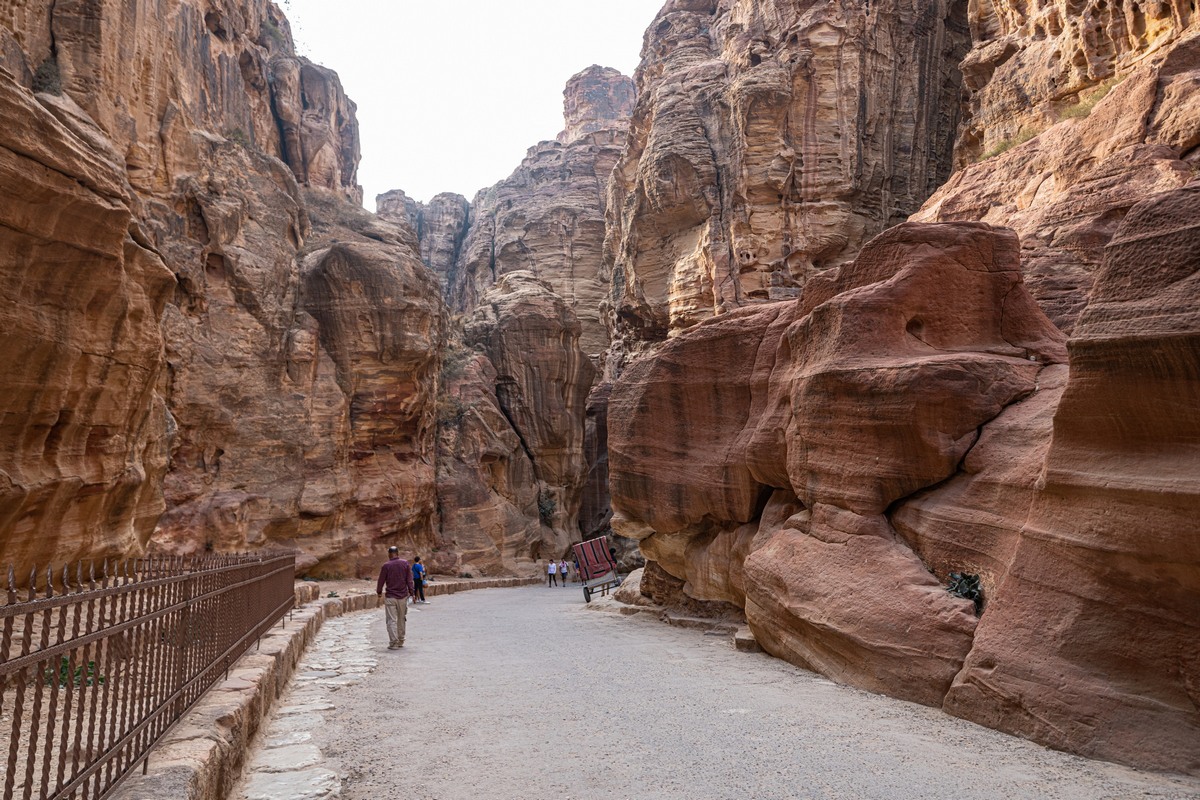
So, what do you see here? Just a rock formation? Or maybe… an elephant? One of those exotic fish that are only to be found at the bottom of the ocean?! ->
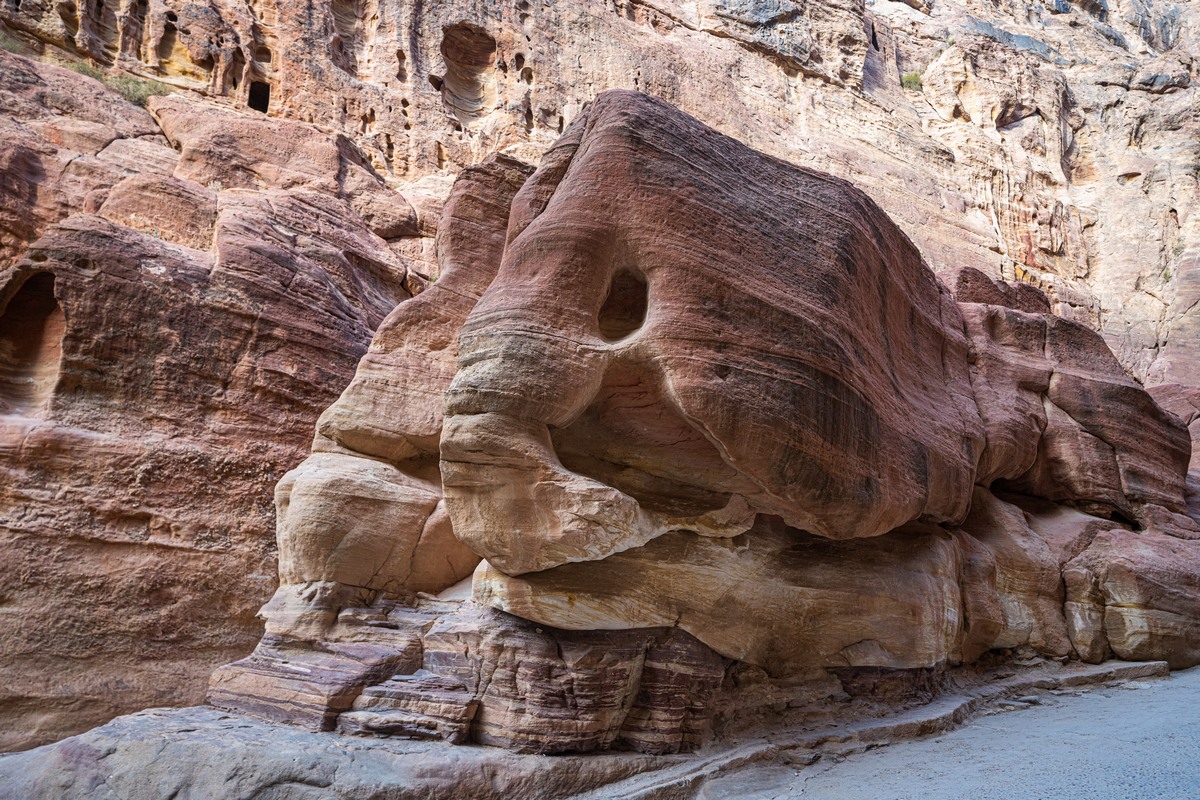
No – can’t be an elephant: the eye’s in the wrong place, and where are the big flappy ears? Wait… what about… an elephant seal – the kind I saw in California once (and will never forget given how ugly they are!)?
Enough! Onward, meditatively…
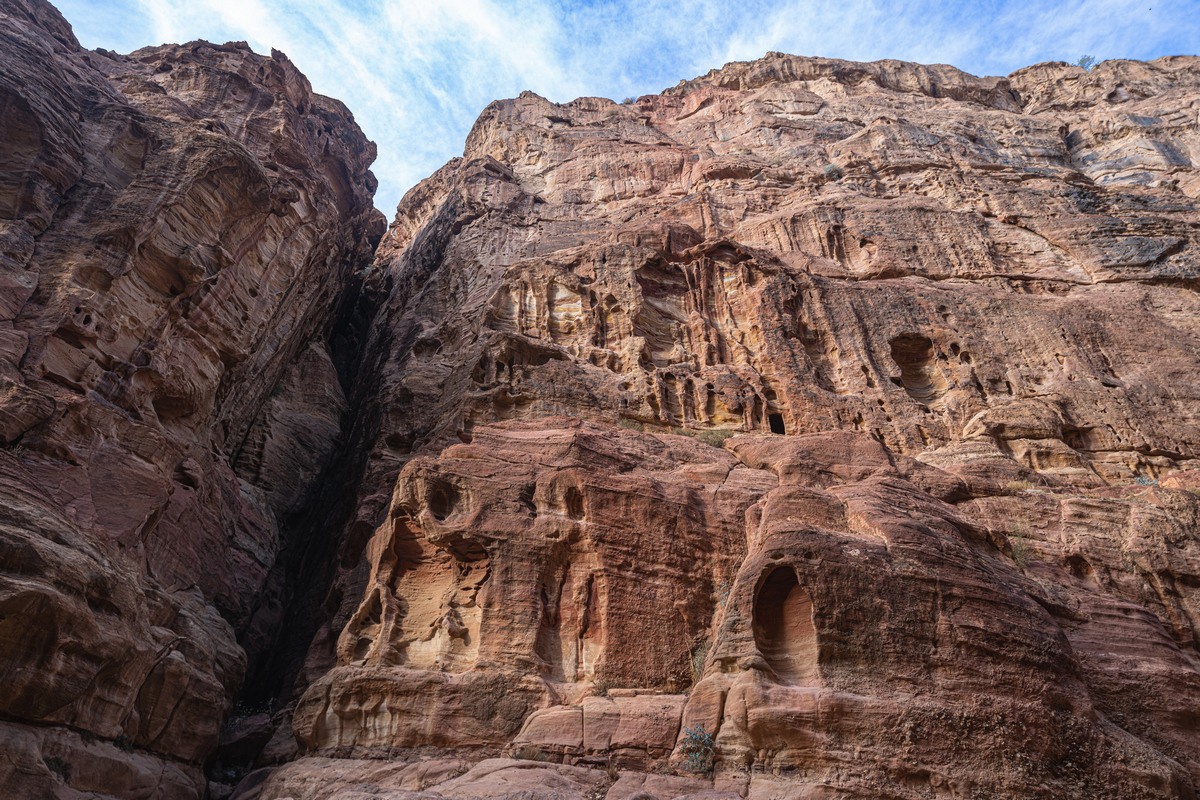
The walls get higher and higher…
Looks like that section of rock up there will one day split off and come crashing down. Yikes! ->
Eventually, after another twist in the ravine…
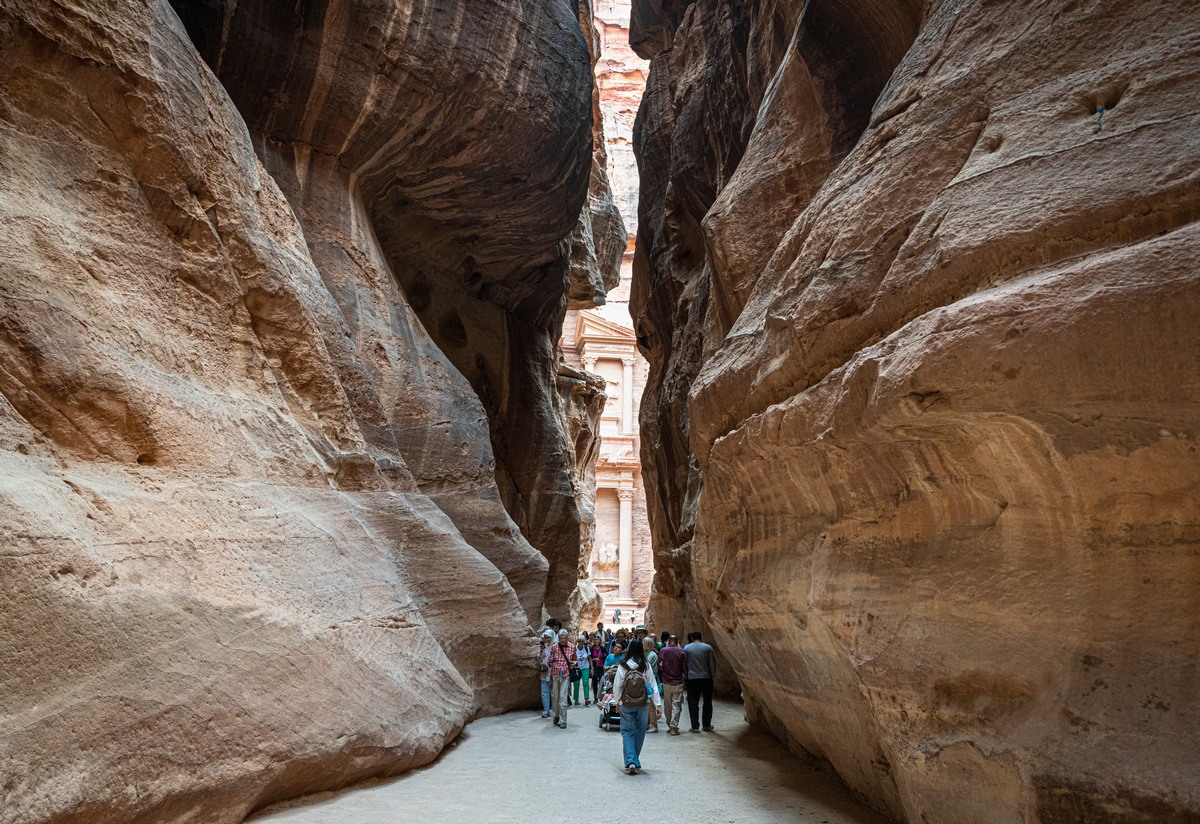
Hurray! There it is! ->
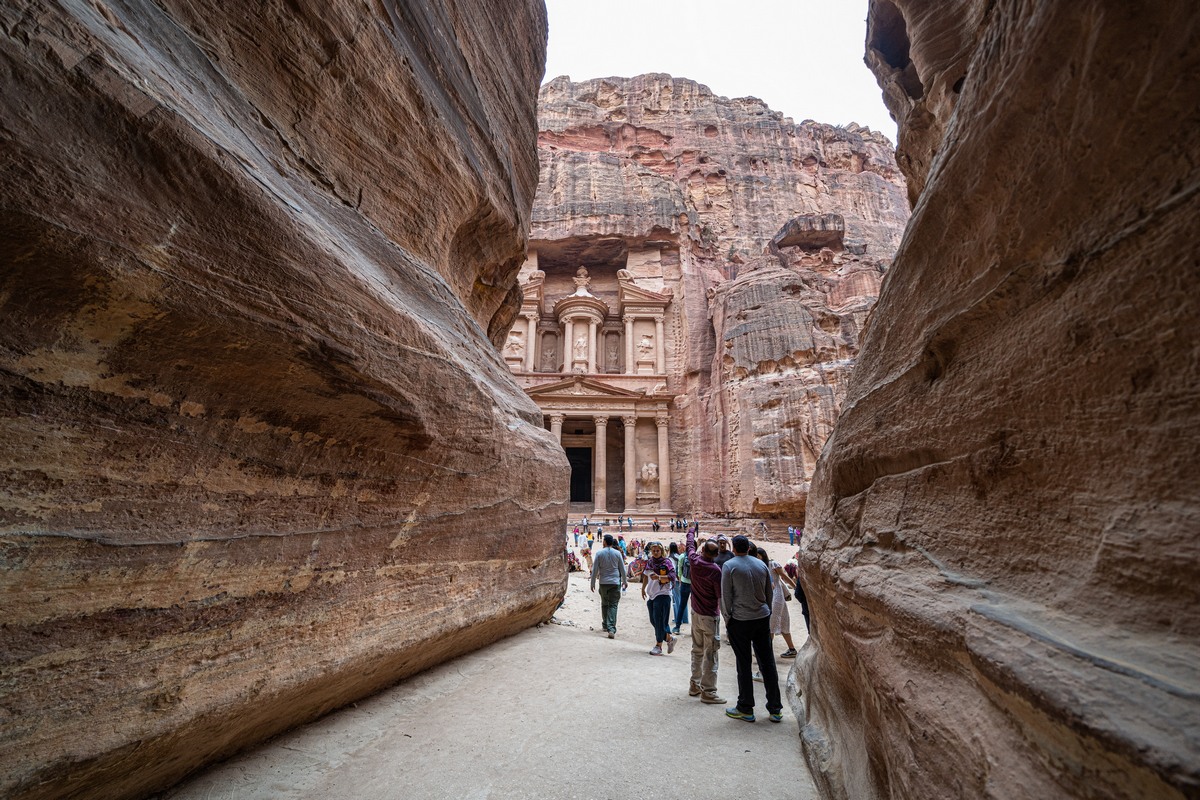
Now, many folks think “Petra” is this here temple. I have to admit being guilty of such an error at one time. Actually, this temple is Al-Khazneh, just one of Petra’s temples – but for sure the most elaborate. Petra is the whole historical and archeological city…
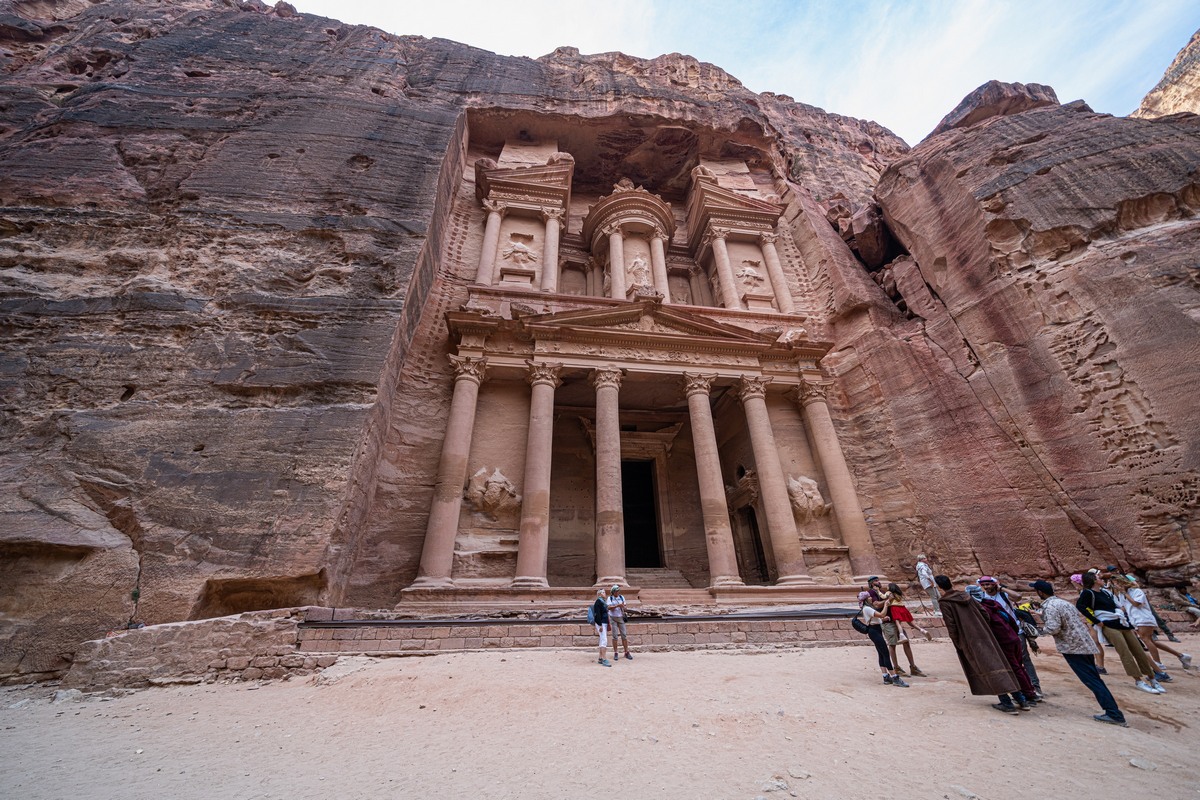
But it seems fuzziness re what it’s called (also when it was built and why), is nothing new: there have been different names and there are various legends regarding its history, but which is the true one (if any?), no one really knows for certain. And I very much doubt we’ll ever find out. What is known is that it was constructed around two thousand years ago. And that’s about it! Of course, there’s one other thing we know: it’s a magnificently marvelous masterpiece! Just a shame there are always tourists and camels and… fridge magnets in the way all the time! ->
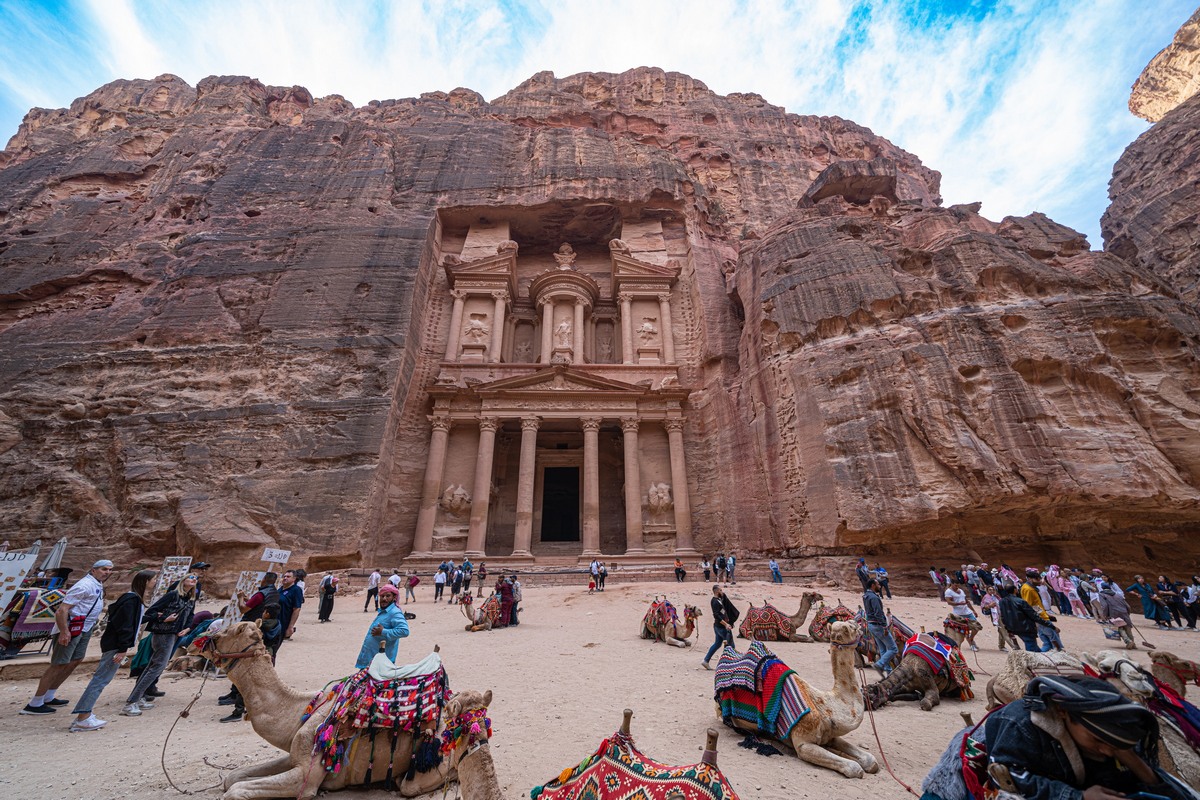
I guess if it were just the camels, that would work, but…
Researching the temple online, I came across this here painting, from 1849. Apparently some of the details are “fantasy elements of the artist”, but some things, I read elsewhere, are accurate; for example, that two-thirds of one of the columns back then was missing. Clearly it’s been restored in the meantime ->
The sculptures in-between the columns to both the left and right appear to have suffered in 170+ years. Shame. The columns were restored simply; alas that wouldn’t be possible for the sculptures ->
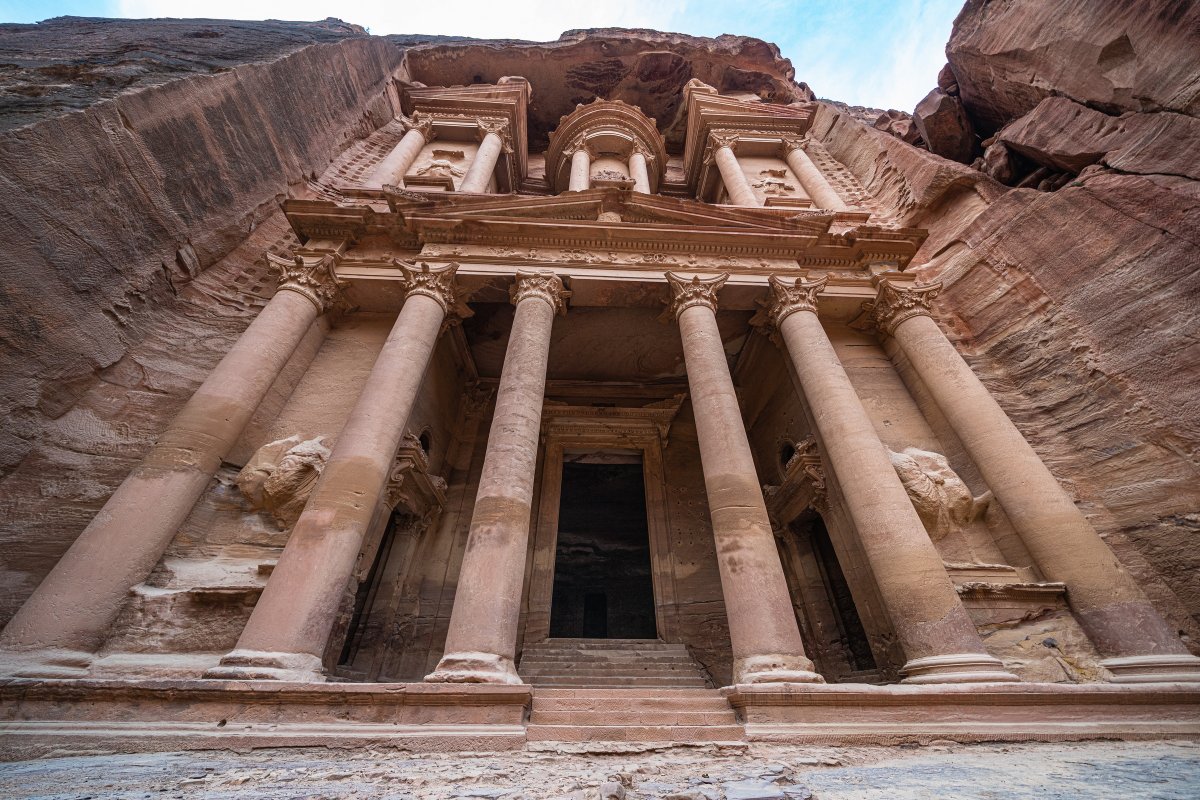
Regarding those sculptures, our guide (and the internet backs him up) told us they were all shot up by Bedouins when they got their hands on some rifles! What a sad tale (…
Are those bullet holes?…
But it was time for us to head on. For there’s more to Petra than just Al-Khazneh…
More facades along the “street” – ancient burial sites:
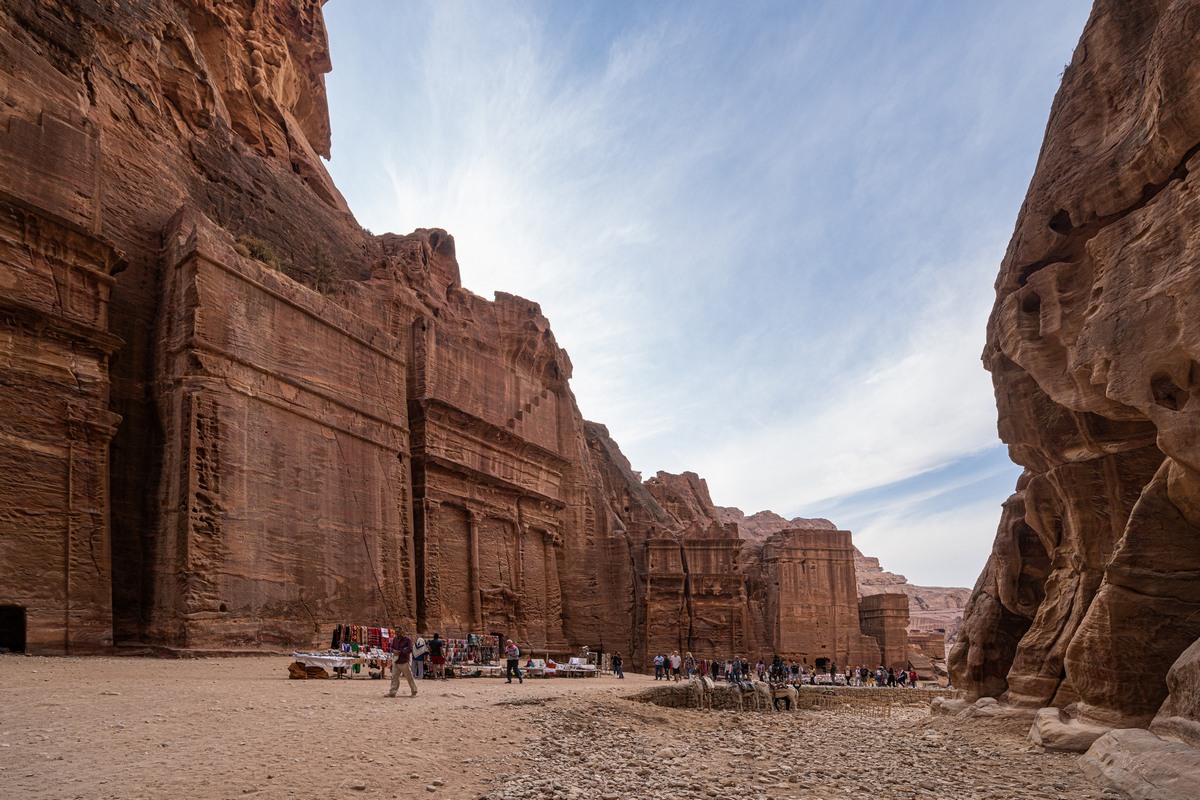
+ street trading, of course ->
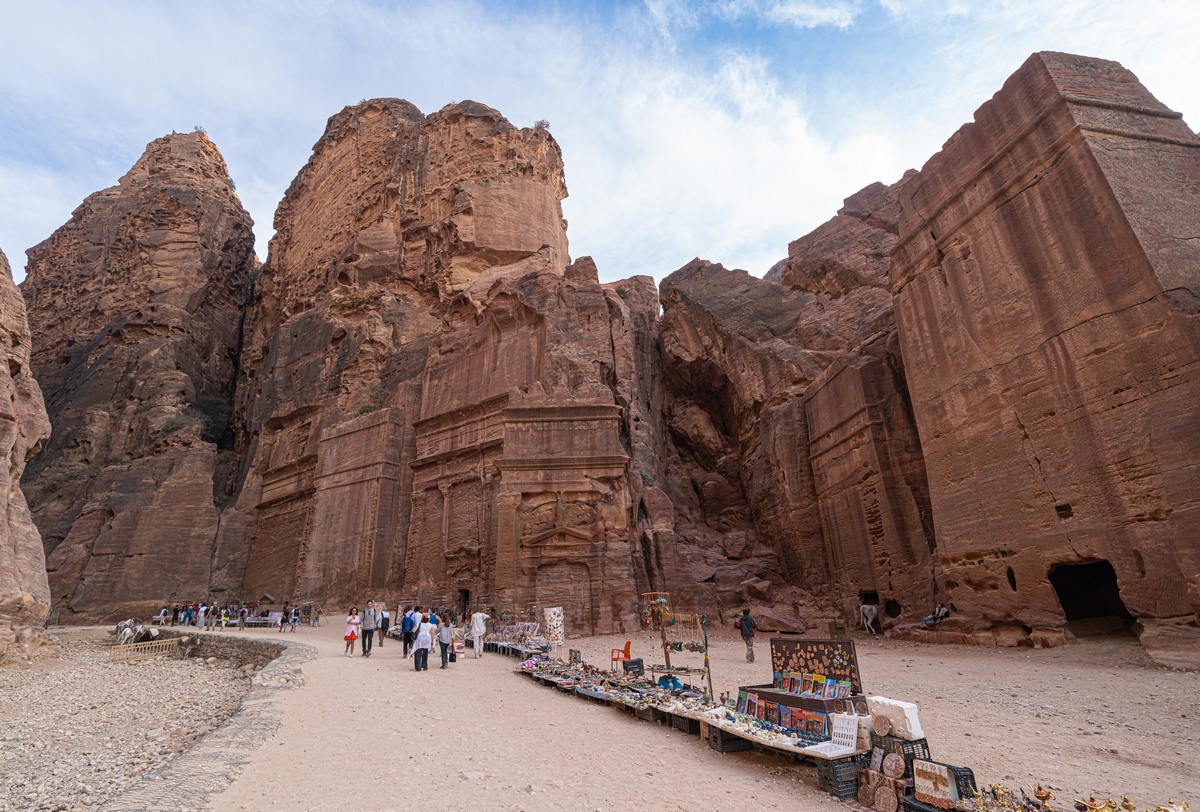
The residential areas:
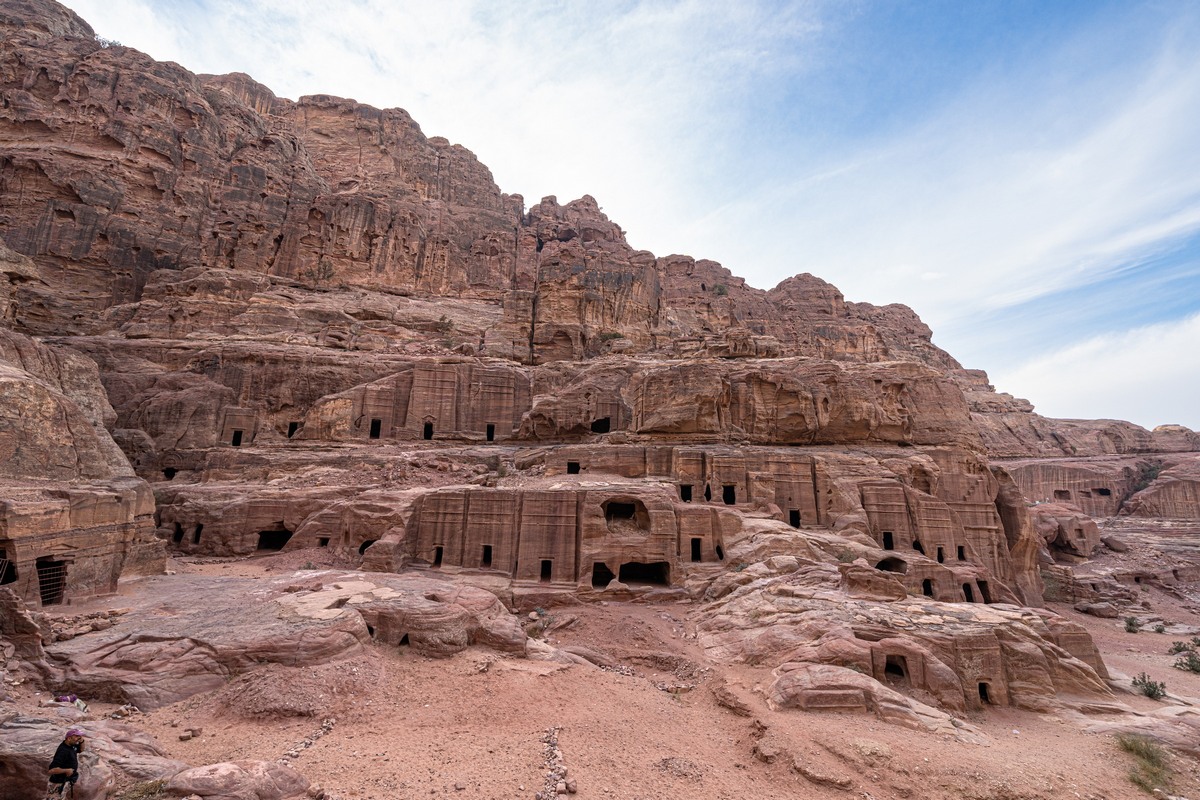
Our guide told us how the Bedouins lived here up until… the 1970s! They were then finally moved to a nearby village that had been constructed specially for them. Not that they wanted to (they’d been living there for centuries after all), but in the end they were indeed persuaded – on one condition: all the business in Petra would remain under their control.
Meanwhile, onward we strolled…
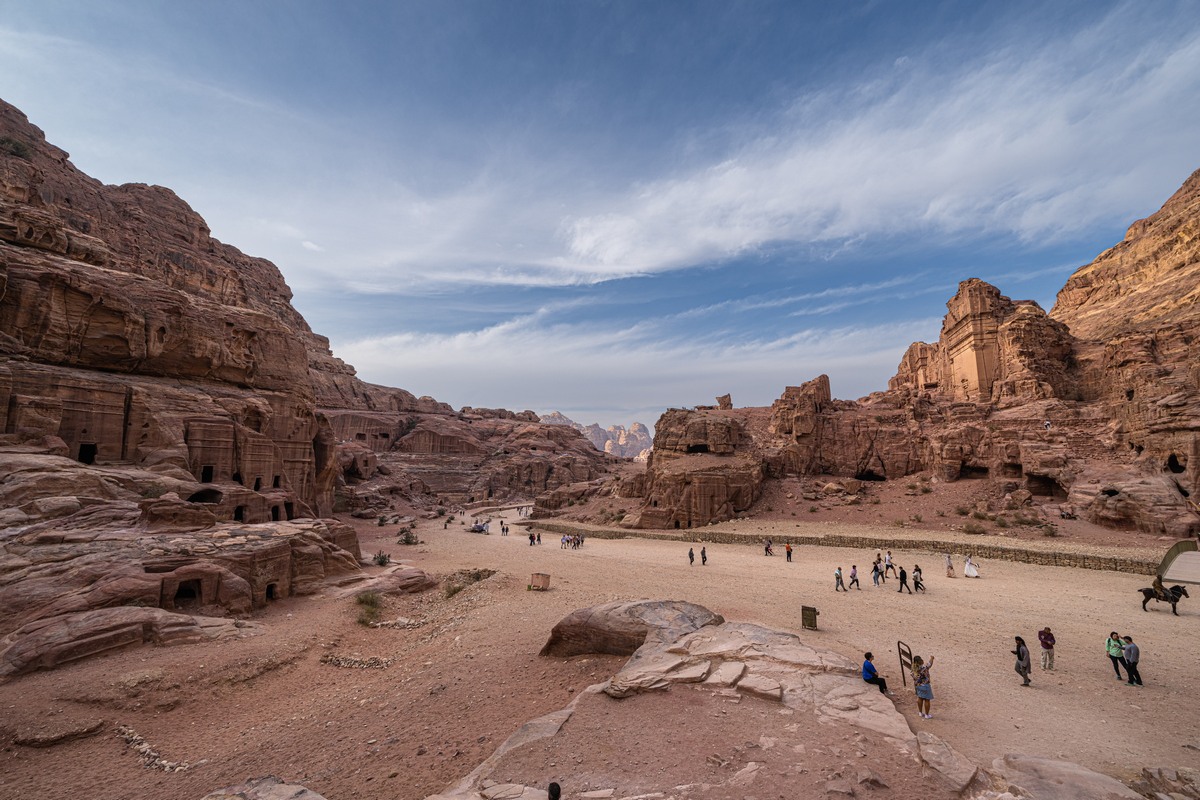
In some of the rockfaces up above occasionally you see “buildings” chiseled into the rock. Like what you see and want a closer look? No problem! Practically all “installations” can be accessed via footpaths. And there are that many that a day to check them all out is way too short a time…
Oh my god-on-his-own (without man:)!->
Up top, a donkey comes into view! Maybe it’s one kept by the Bedouins – there’s also one of their shacks up there ->
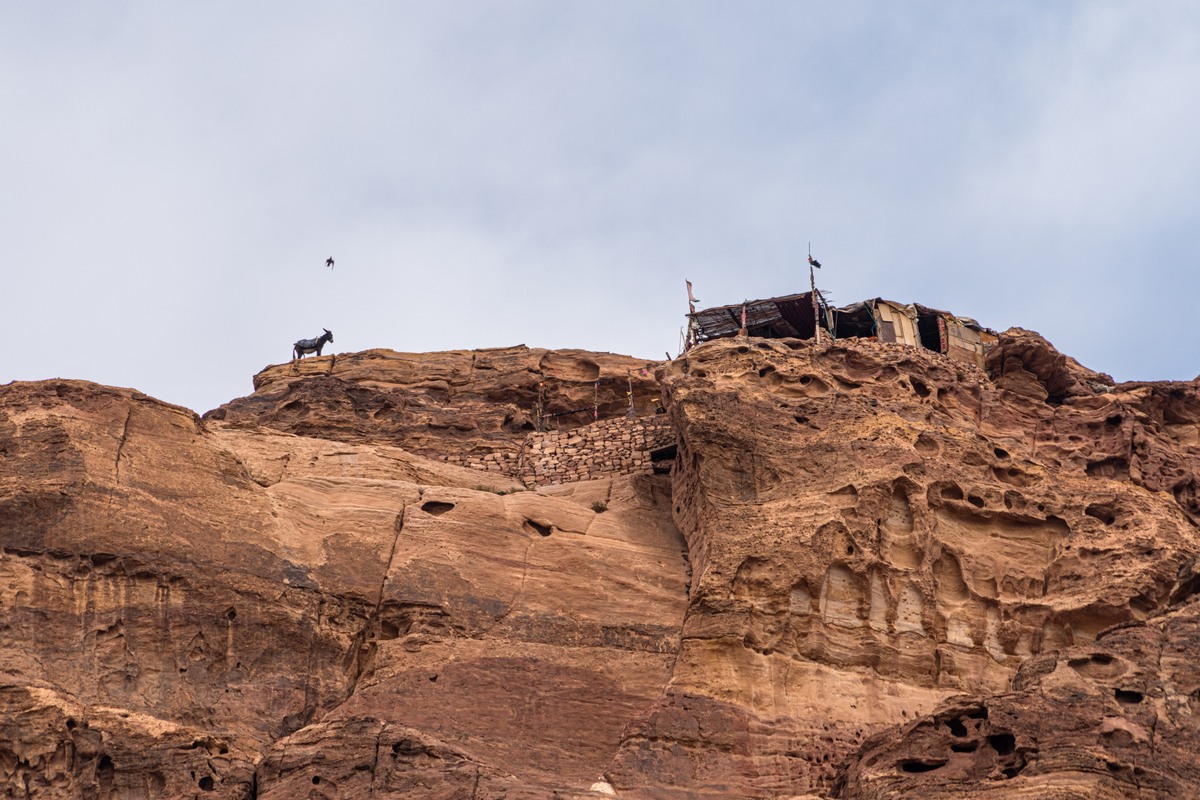
Another donkey. I guess they like the views from up there:
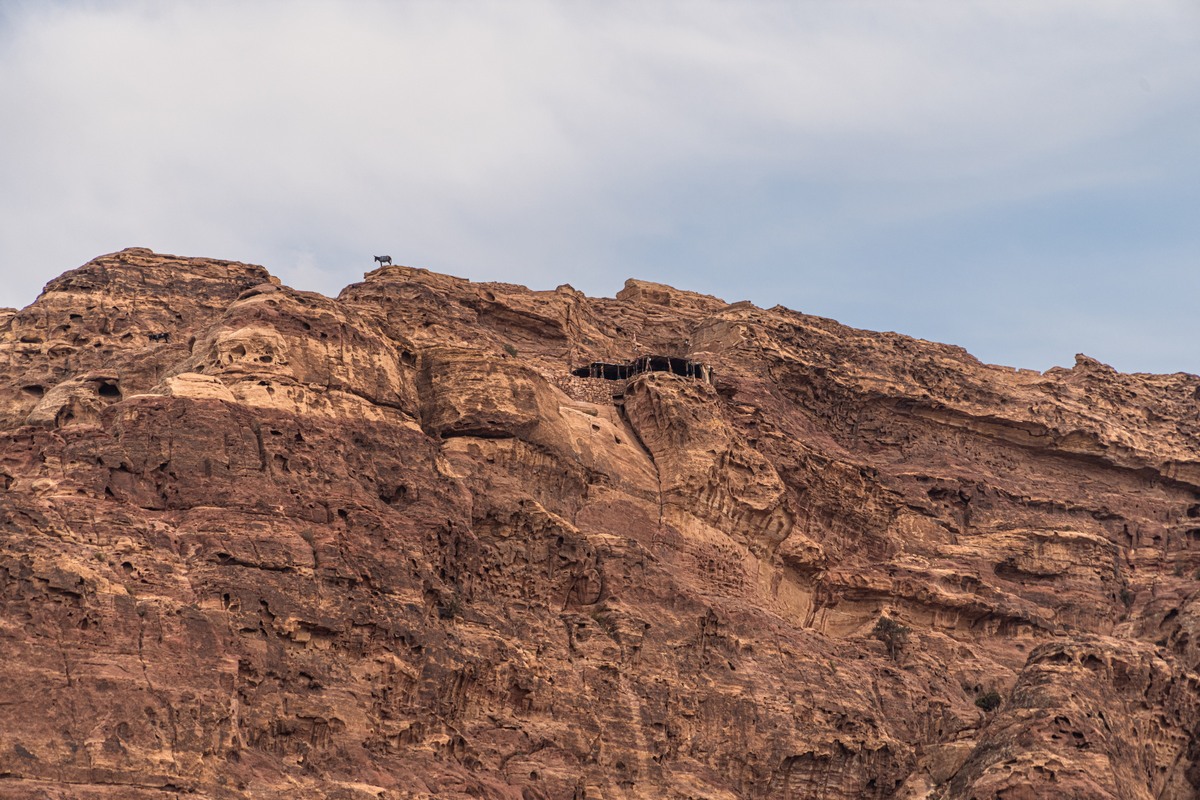
Here are seven photos to convey both the magnificence and scale of Petra:
If you look closely here you can see caves, some steps and an arch (near the top) ->

Onward we stroll…
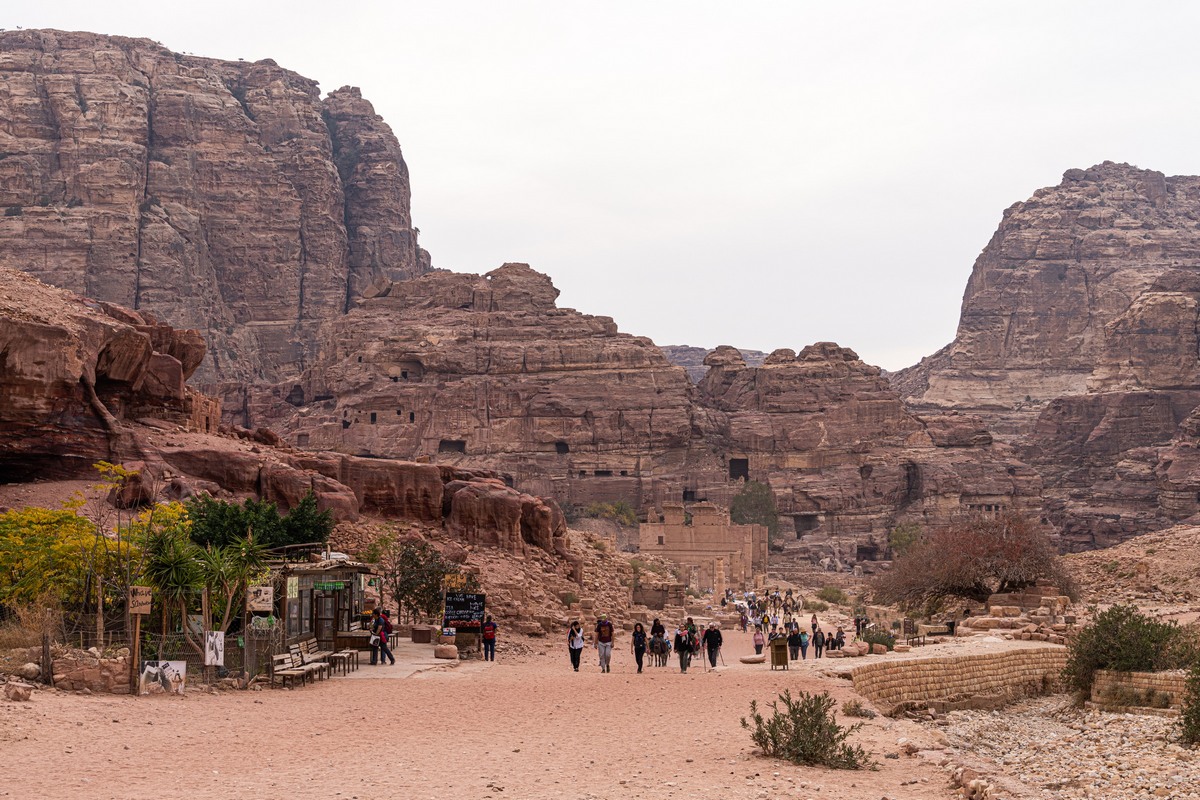
Next up – Mother Nature’s turn again: carvings made over millennia from the copious volumes of rainwater that fall occasionally:
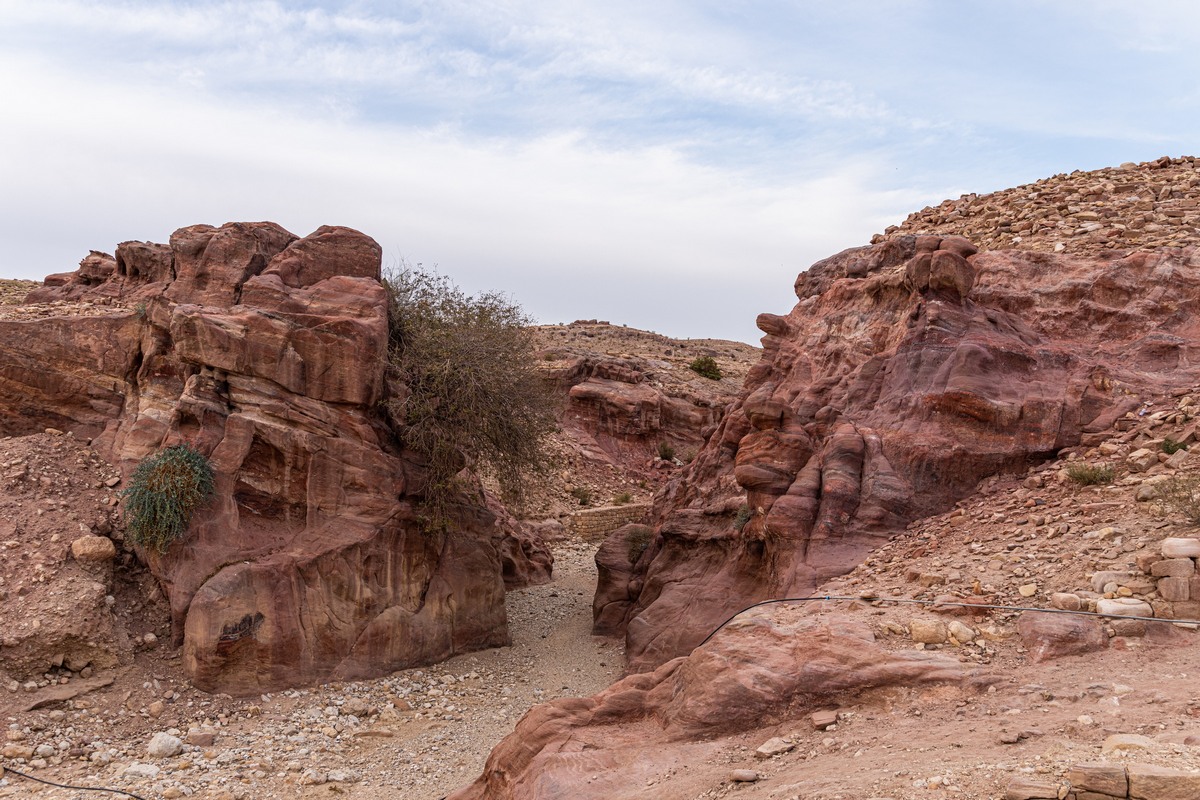
My oh my: check out this tree – it’s grown up all around that there boulder, which must have been there… how long?! ->
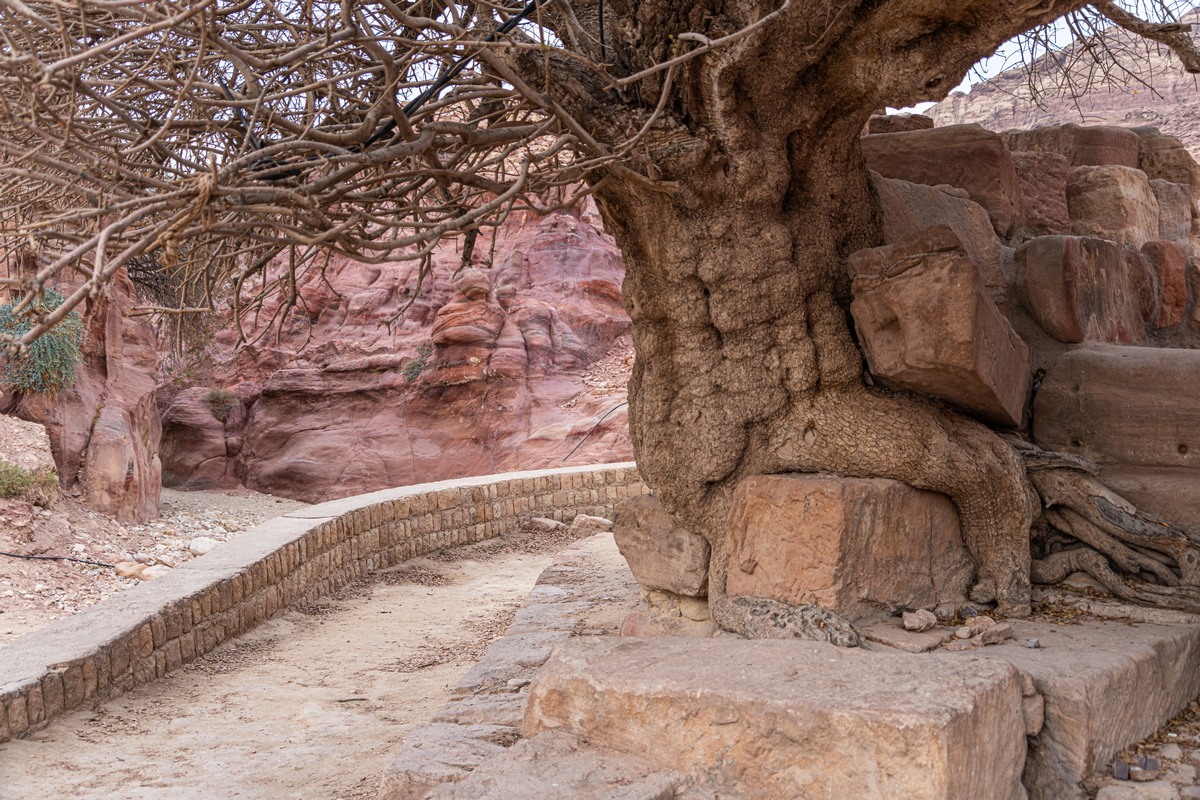
It seems they couldn’t convince all the Bedouins to resettle: you can see doors and windows to those caves, meaning folks still live there! ->
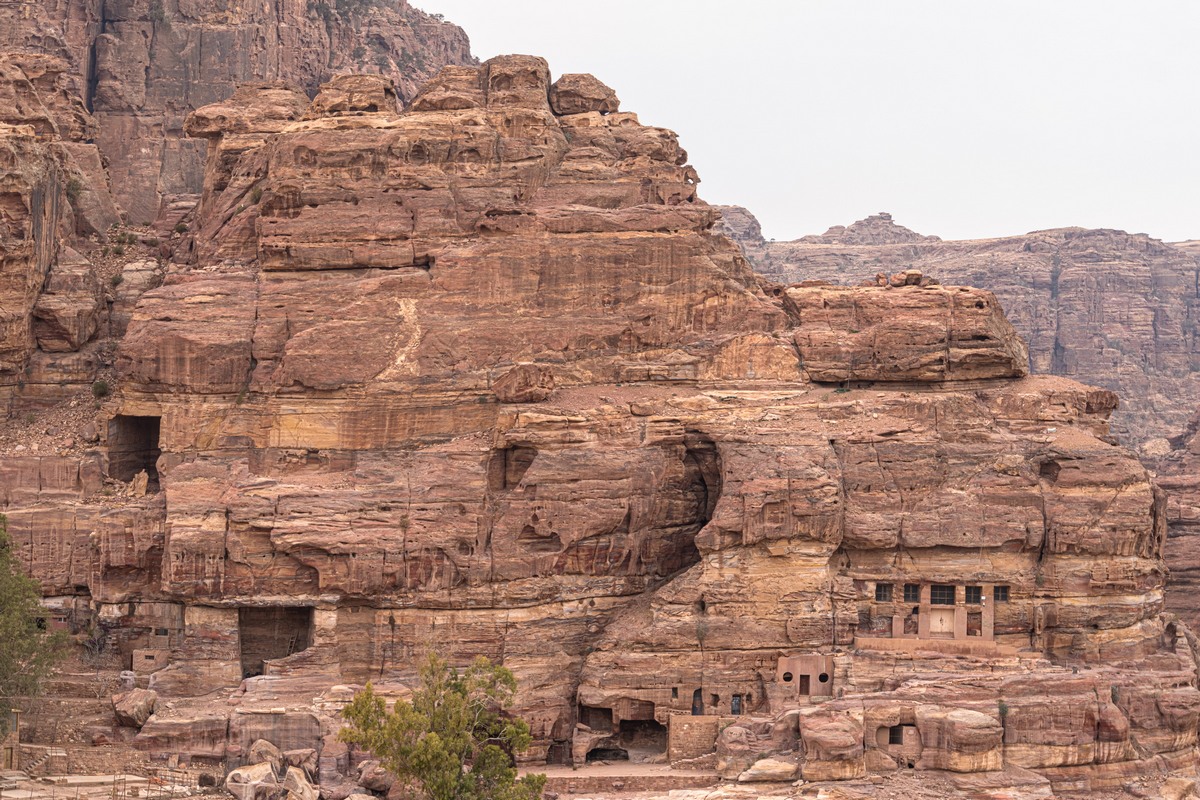
Ruins of various eras:
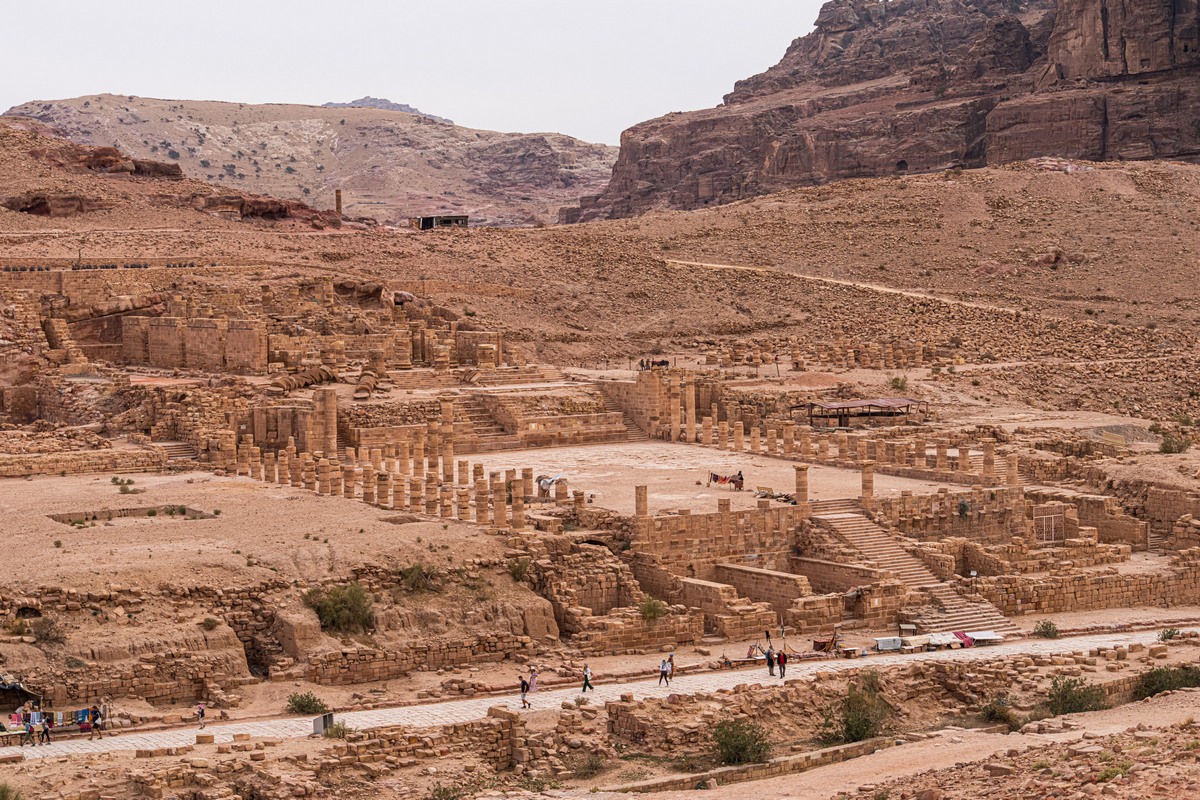
Most of the ancient city that was built up – not cut into the mountains – was destroyed by an earthquake, which our guide told us took place in the year 747 (other sources beg to differ). After such near-total destruction, the settlement was practically completely abandoned, with the Bedouins moving in later on…
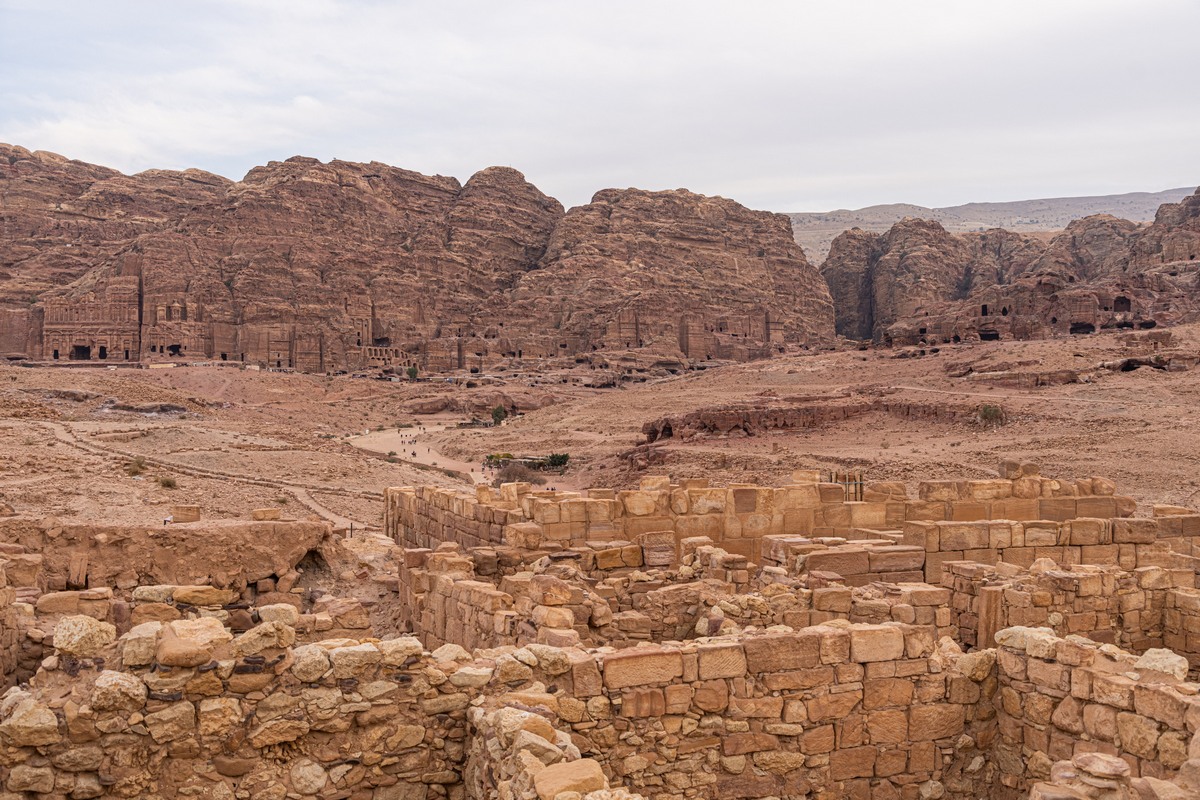
Modern-day archeological digs of Roman or Byzantine (I can’t recall which) buildings:
But back to the main feature – Al-Khazneh – again, for I forgot to tell you that, for a small fee, you can climb up the mountainside opposite it to get the “VIP view”. And here it is! ->
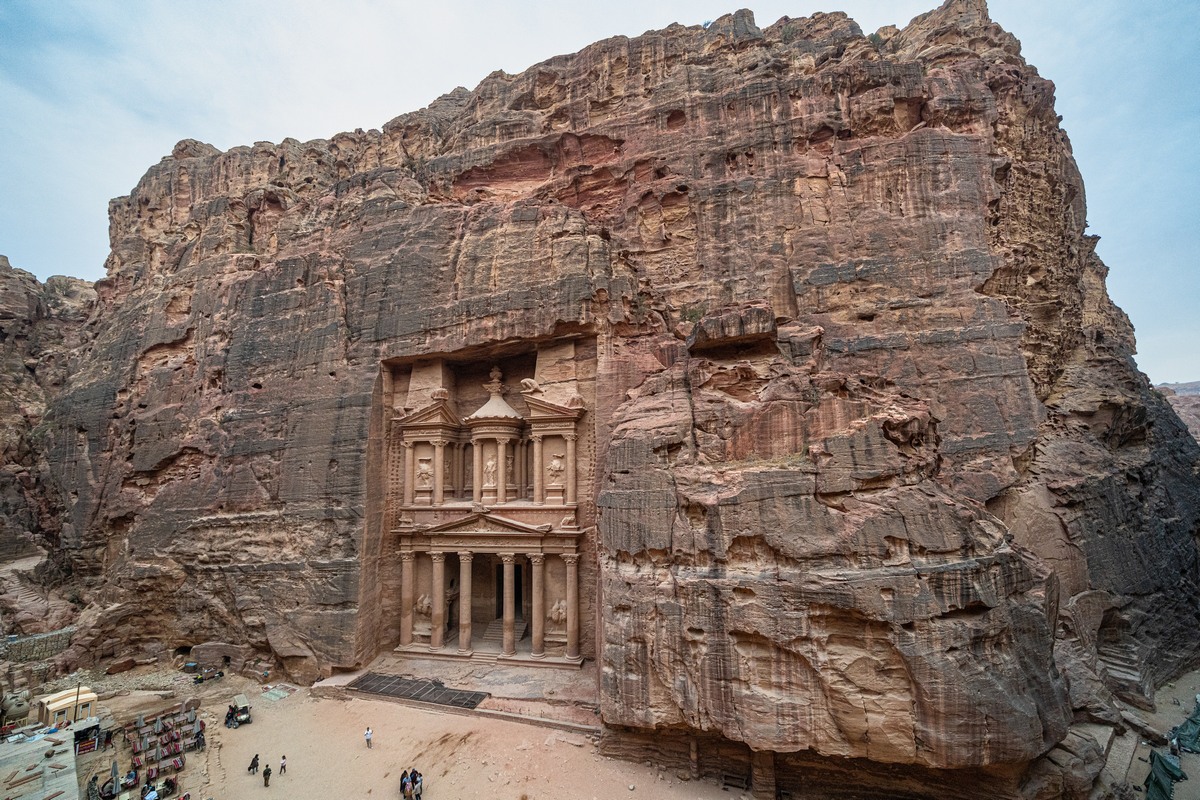
And that was that. A wonderful walk. Petra, it goes without saying… – highly recommended!
Btw: our guide told us how the donkeys here earn more than dentists in the capital! I wonder what the horses earn?!
PS: At the hotel we stayed in that night – three installations. Can you guess what they are?! –>
